

Forums > Land Yacht Sailing > > Construction
Build a landyacht. lake lefroy mini yacht, ">general ">sail making ">construction ">blokarts ">events & competition.

WA, 5921 posts
I'm starting this post to do a step by step building lesson as I build a Lake Lefroy Mini. I intend to go through it from tools materials, wheels, steels, sails, masts, pulleys and ropes including building hints and "dont's". PLEASE DO NOT POST TO THIS THREAD as it will get too long with repeated questions. Please post all questions, suggestion, or disagreements onto a separate thread and I will endeavour to keep the world in eternal happiness. Lets start with the history of the design. The project started 3 years ago as a challenge to equal or better some of the great design aspects of a BLOKART, without the pricetag. One lesson we learnt was that the blokart actually represents excellent value and is a lot harder to replicate than you would think. The self imposed rules were to use the same wheelbase and sail area as a starting point. Materials were to be sourced as locally as possible and be materials that others could also source in their area. Utililize recycled materials as much as possible. The "final" product looks and sails great and managed to come up to many of the standards set by the BLOKART but certainly not all. This yacht was designed by a team of up to 20 people in WA and SA over the three year period. I am indebted to the input that each person has put in. PLEASE NOTE: THE FOLLOWING INFORMATION AND IMAGES ARE COPYRIGHT TO PAUL DAY. YOU ARE WELCOME TO USE AND DOWNLOAD THIS INFORMATION FOR PRIVATE USE FREE OF CHARGE AND WITH MY BLESSINGS. YOU MAY NOT REPRODUCE THIS INFORMATION OR IMAGES FOR COMMERCIAL GAIN. regards Paul Day Photo's and step by step instructions to follow. PLEASE DO NOT POST TO THIS THREAD BUT START A NEW ONE FOR QUESTIONS.

WHEELS. the yacht will be using 4.00x 8 rims commonly known as wheel barrow wheels. they are the most universally available wheels we've ever come across, usually reasonably priced and offer good rolling ability on a range of surfaces. the Bearing most commonly seen is the 2"OD,1"ID low speed bearing. which is the easiest to build with . with a bit of work the wheels can be retrofitted with precision bearings , which will give longer life and higher performance. In Australia expect to around the $50 per complete wheel. You may have to buy rim/tyre/bearings separately to get the best value . The next post is a photo of what we've got hold of in the last 2 years. as you will see by the details and opinions of each wheel , price does not determine value.

Wheel 6. Unknown brand ,polypropylene, to suit 25mm solid shaft.. also available in20mm,12mm. Rated Very Poor unsuitable for landyachts or wheelbarrows Wheel 7 Westmix replacement wheel from leading WA hardware retailer. note large quantity of lead glued to rim to attempt balancing. Rated Very Poor. unsuitable for landyachts Kalgoorlie steak knife and Kambalda toothpick shown for size comparison

Apologies for slow work folks, Ive been off sailing.Almost back in the real worldand promoise to get thing moving soon.

there might be a delay in th continuation of the 2 minis were building of a few weeks. sorry. due to a slight mishap i qualified myself for the %^#@!$ stupid idiot award of the year by slicing and dicing a few fingers. due to the bulky bandages(refered to as a stump bandage) i wont be able to fit a welding glove on for a month or so . i do apologise to all,but will get the rest of the photos and plans done ASAP. fortunately long term it will only affect my ability to pick my nose ,which may disrupt my bulls**t detecting abilities slightly.

"Build a Landyacht. Lake Lefroy Mini Yacht" started by landyacht
Send message.
Copyright © 1997-2024 Seabreeze.com.au - All Rights Reserved.
- KM Yachtbuilders
- The Shipyard
- - Aluminium
- - The People of KMY
- - Custom Yacht Builders
- - Design Process
- - Building Process
- The Services
- - Brokerage
- - Painting Service
- - Customer Care
- - Build Your Own Yacht
- - Bestevaer
- - Sailing Yachts
- - Motor Yachts
- - Visit the Shipyard
- - Partnerships
- - Careers (Dutch)
Build your own yacht
A yacht isn’t built in a day. For the future owner it starts when after years of dreaming they decide that the time to have their own yacht built is now.
Build your imagination
As a process, having your own yacht built comes close to having your own house built. You have an idea, you talk to an architect, you discuss the intended use, possibilities, materials and budgets. Except that when its done, you can take your boat all over the world.
Building a yacht: step by step plan
After a first contact, usually by phone or email, we make an appointment to meet. Face to face, digital or in the flesh, whatever works best for you. We discuss initial ideas, wishes and demands. We want to get to know you and your sailing intentions, so we understand what kind of boat fits you. When we have a general idea of the intended use, the size, hull shape, riging wishes and budget, that’s when we can start sketching.
We draw our initial designs. Top view, side views. These sketches form the basis of a process that can take anything from a couple of months to more than a year. There are many choices to make. Shape, size, exterior, interior, materials, number of masts, huts, bunks, engine type to name but a few. After each round of schetches we discuss the design choices. If they meet your demands and how they have consequences for other wishes you might have. You can imagine how for example the choice for a lifting keel influences the interior.
Prepare for building
When the final drawings are approved, we can prepare for hull building. This means breaking the whole design down to a list of all parts and materials and checking their availability. Once we know when we can have all necessary materials, we can start planning the build.
Start building
The day we start the actual build is a special day. If in any way possible the owners are present and get the honour of performing the first weld, much like laying the first brick when building a new house.
When the hull is done and it is time to build the interior, we ideally make a mockup of the yacht so we can walk you through it and make sure we’re still on the right track.
Finishing touch
Now it’s time for finishing, electricity, plumbing and then we’re ready for testing.
Before we can launch, we test everything inside. Water, plumbing, lights, gas and if everything works as planned, it time to launch.
Launch time
The moment everybody has been waiting for. Launch time. But the yacht isn’t finished yet. The next step still holds some essential parts.
Getting ready
Mast, rigging and sails are installed. Quite important for a sail boat.
Now your yacht is ready to be tested in the field, or in our case in the lake, the IJsselmeer.
And then, after what usually has been more than 12 months, we can hand the ownership officially over to you.
A custom built yacht is unique. There is no way of knowing beforehand that what looked like an excellent idea on paper, will perform exactly as expected. So after a few weeks of sailing, you might want to come back and have some options changed or added. This is normal and we still have to build our first yacht that doesn’t need a few tweaks here and there before its new owners are perfectly happy.
Interested in your own yacht?
Please leave this field empty.
Subscribe to our newsletter and we'll keep you up to date with everything KMY.
By clicking 'Send your request', I consent to having KM Yachtbuilders store my submitted information, so they can respond to my enquiry. More information .
Design Process
Translating the customer’s demands and wishes into a comfortable, reliable and safe yacht is basically what the design process entails. It all starts with listening to the customer, what do they want, what do they need and how can we make that happen.
Decades of experience, expertise and many specialized eyes for detail.
Building process.
A yacht isn’t built in a day. For the future owner it starts when after years of dreaming they decide that the time to have their own yacht built, is now.
This is Bestevaer
Every yacht we built is unique, and built specifically for its owner. No two yachts are the same, as each owner has his own wishes and demands.
Bestevaer M/Y
Inspired by its iconic Bestevaer expedition sailing yachts, KM Yachtbuilders proudly presents a motoryacht like no other. With its minimal design in raw aluminium and Scandic design interior Bestevaer motoryachts set the bar for understated elegance. Form follows function, the function being: a go-anywhere yacht offering real comfort in all weather conditions. Where will you go next?
DIY Boat Building Plans
Yacht Plans & Blueprints
Download over 500 Boat Plans. Click on the link below.
-->click here<--.
Table of Contents
Overview of Yacht Plans & Blueprints
Yacht plans and blueprints are essential tools for anyone looking to build their own yacht . These detailed documents provide a roadmap for the construction process, outlining the necessary steps and specifications required to bring a yacht to life. Without a plan, building a yacht can be a daunting and overwhelming task. Yacht plans and blueprints provide the necessary guidance and structure to ensure a successful build.
Key Takeaways
- Yacht plans and blueprints are essential for yacht design and construction.
- There are different types of yacht plans and blueprints available, and it’s important to choose the right one for your needs.
- Reading and interpreting yacht plans and blueprints requires some knowledge and skill.
- Customizing yacht plans and blueprints can help you create a yacht that meets your specific requirements.
- Quality yacht plans and blueprints can be found online, but cost considerations should also be taken into account.
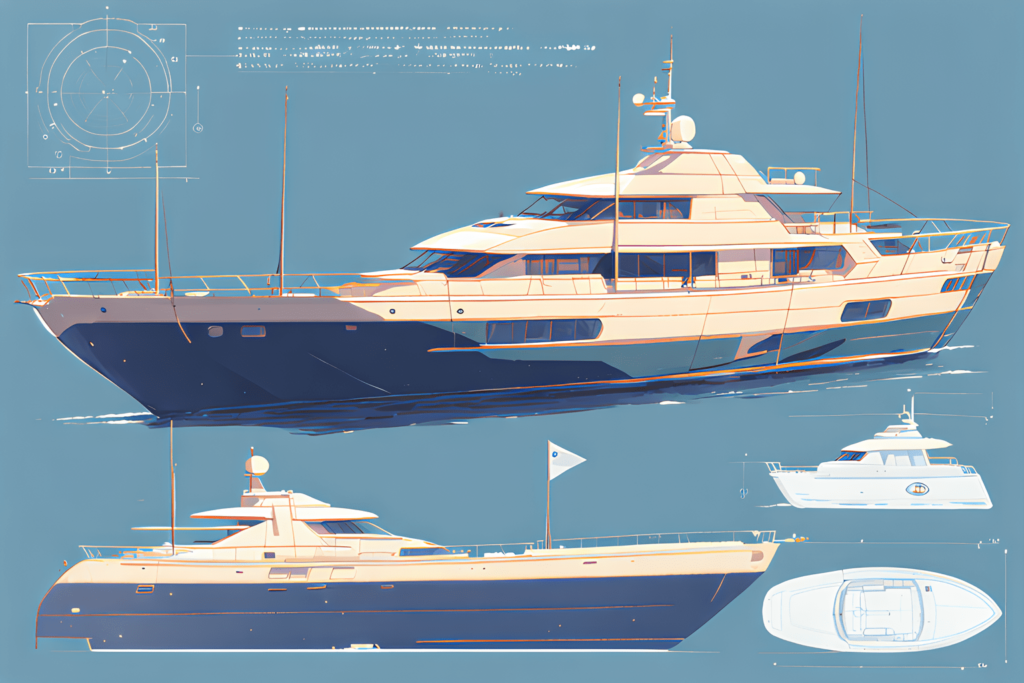
Understanding the Importance of Yacht Plans & Blueprints
Safety considerations are of utmost importance when it comes to yacht construction. Yacht plans and blueprints take into account various safety factors, such as stability, buoyancy, and structural integrity. By following these plans, builders can ensure that their yacht meets all necessary safety standards. Accuracy in measurements and specifications is another crucial aspect of yacht plans and blueprints. These documents provide precise measurements for each component of the yacht, ensuring that everything fits together seamlessly. This accuracy is essential for the overall functionality and performance of the yacht. Cost-effectiveness is yet another advantage of using yacht plans and blueprints. By having a detailed plan in place, builders can avoid costly mistakes and rework. The plans outline the necessary materials and quantities required for each stage of construction, allowing builders to budget effectively and minimize waste.
Types of Yacht Plans & Blueprints Available
There are three main types of yacht plans and blueprints available: stock plans, semi-custom plans, and custom plans. Stock plans are pre-designed plans that are readily available for purchase. These plans are created by professional yacht designers and offer a range of designs to choose from. Stock plans are a cost-effective option for those looking to build a yacht without the need for extensive customization. Semi-custom plans offer a middle ground between stock plans and custom plans. These plans allow for some level of customization, such as modifying the interior layout or adding specific features. Semi-custom plans provide a balance between affordability and personalization. Custom plans are tailored to the specific needs and preferences of the builder. These plans are created in collaboration with a yacht designer, taking into account the builder’s vision and requirements. Custom plans offer the highest level of personalization but can be more expensive and time-consuming to develop.
Factors to Consider When Choosing Yacht Plans & Blueprints
| Factors to Consider | Description |
|---|---|
| Size of the Yacht | Determines the number of people it can accommodate and the type of activities it can support. |
| Design and Style | Should match the intended use of the yacht and the owner’s personal preferences. |
| Materials Used | Affects the durability, maintenance, and cost of the yacht. |
| Cost | Should fit within the owner’s budget and include all necessary expenses such as construction, equipment, and maintenance. |
| Builder’s Reputation | Should have a proven track record of quality workmanship and customer satisfaction. |
| Availability of Plans and Blueprints | Should be easily accessible and provide detailed instructions for construction. |
| Legal Requirements | Should comply with local and international laws and regulations for safety, navigation, and environmental impact. |
When choosing yacht plans and blueprints, several factors need to be considered. The size and type of yacht are important considerations, as different designs and plans are suitable for different purposes. Whether you’re looking to build a small sailing yacht or a large motor yacht, selecting the right plan is crucial. The skill level of the builder is another factor to consider. Some plans may require advanced woodworking or metalworking skills, while others are more beginner-friendly. It’s important to choose a plan that aligns with your skill level to ensure a successful build. Budget is also a significant factor when selecting yacht plans and blueprints. Stock plans are generally more affordable, while custom plans can be more expensive due to the additional design work involved. It’s essential to establish a budget and find a plan that fits within your financial constraints.
How to Read and Interpret Yacht Plans & Blueprints
Reading and interpreting yacht plans and blueprints can seem daunting at first, but with some basic knowledge, it becomes much more manageable. Understanding symbols and abbreviations is crucial, as these are used throughout the plans to represent various components and materials. Familiarizing yourself with these symbols will help you navigate the plans effectively. Reading measurements and dimensions is another essential skill when working with yacht plans and blueprints. These measurements provide precise information about the size and placement of each component. It’s important to understand how these measurements are represented on the plans to ensure accurate construction. Interpreting sections and elevations is another aspect of reading yacht plans and blueprints. These drawings provide a detailed view of the yacht from different angles, allowing builders to visualize how everything fits together. Understanding these drawings will help you understand the overall structure and layout of the yacht.
The Role of Yacht Plans & Blueprints in Yacht Design
Yacht plans and blueprints play a crucial role in the yacht design process. They serve as a communication tool between the designer and the builder, ensuring that the builder understands the designer’s vision and requirements. Plans provide a visual representation of the yacht, allowing both parties to collaborate effectively. The importance of plans in the design process cannot be overstated. They provide a roadmap for the construction process, ensuring that all necessary steps are followed and that the final product meets the desired specifications. Plans also allow for adjustments and modifications to be made before construction begins, saving time and resources. Collaboration between the designer and builder is key when working with yacht plans and blueprints. The builder’s input and feedback are essential in ensuring that the plans meet their needs and preferences. This collaboration ensures that the final product is a true reflection of both the designer’s vision and the builder’s requirements.
Customizing Yacht Plans & Blueprints to Suit Your Needs
While stock plans offer a range of designs to choose from, sometimes builders may want to make modifications to suit their specific needs. Making modifications to existing plans is a common practice and allows builders to personalize their yacht without starting from scratch. Working with a designer to create a custom plan is another option for those looking for a truly unique yacht. Custom plans offer complete personalization, allowing builders to incorporate specific features or design elements that are not available in stock plans. This option requires collaboration with a yacht designer to bring your vision to life.
The Benefits of Using Yacht Plans & Blueprints for DIY Projects
Using yacht plans and blueprints for DIY projects offers several benefits. One of the most significant advantages is cost savings. By building your own yacht, you can save a significant amount of money compared to purchasing a pre-built yacht. Yacht plans and blueprints provide the necessary guidance to ensure a successful build, even for those with limited experience. Personalization is another benefit of using plans and blueprints for DIY projects. By building your own yacht, you have the freedom to customize every aspect of the design to suit your preferences. This level of personalization is not possible with pre-built yachts. The satisfaction of building your own yacht is also a significant benefit. The sense of accomplishment that comes from seeing your creation come to life is unparalleled. Building a yacht is a challenging but rewarding endeavor that allows you to create something truly unique.
Where to Find Quality Yacht Plans & Blueprints
Finding quality yacht plans and blueprints is essential for a successful build. There are several resources available for builders looking for plans. Online resources offer a wide range of options, including stock plans and custom designs. Many yacht design firms also offer plans for sale, providing professional designs and expertise. Boat shows and events are another great place to find quality yacht plans and blueprints. These events often feature displays from various designers and builders, allowing you to see different designs firsthand and speak directly with professionals in the industry.
Cost Considerations for Yacht Plans & Blueprints
The cost of yacht plans and blueprints can vary depending on several factors. Custom plans tend to be more expensive due to the additional design work involved. Stock plans are generally more affordable, but prices can vary depending on the complexity and size of the design. Budget-friendly options are available for those looking to minimize costs. Some designers offer discounted or budget-friendly plans that still provide high-quality designs at a more affordable price point. It’s important to research different options and compare prices to find a plan that fits within your budget.
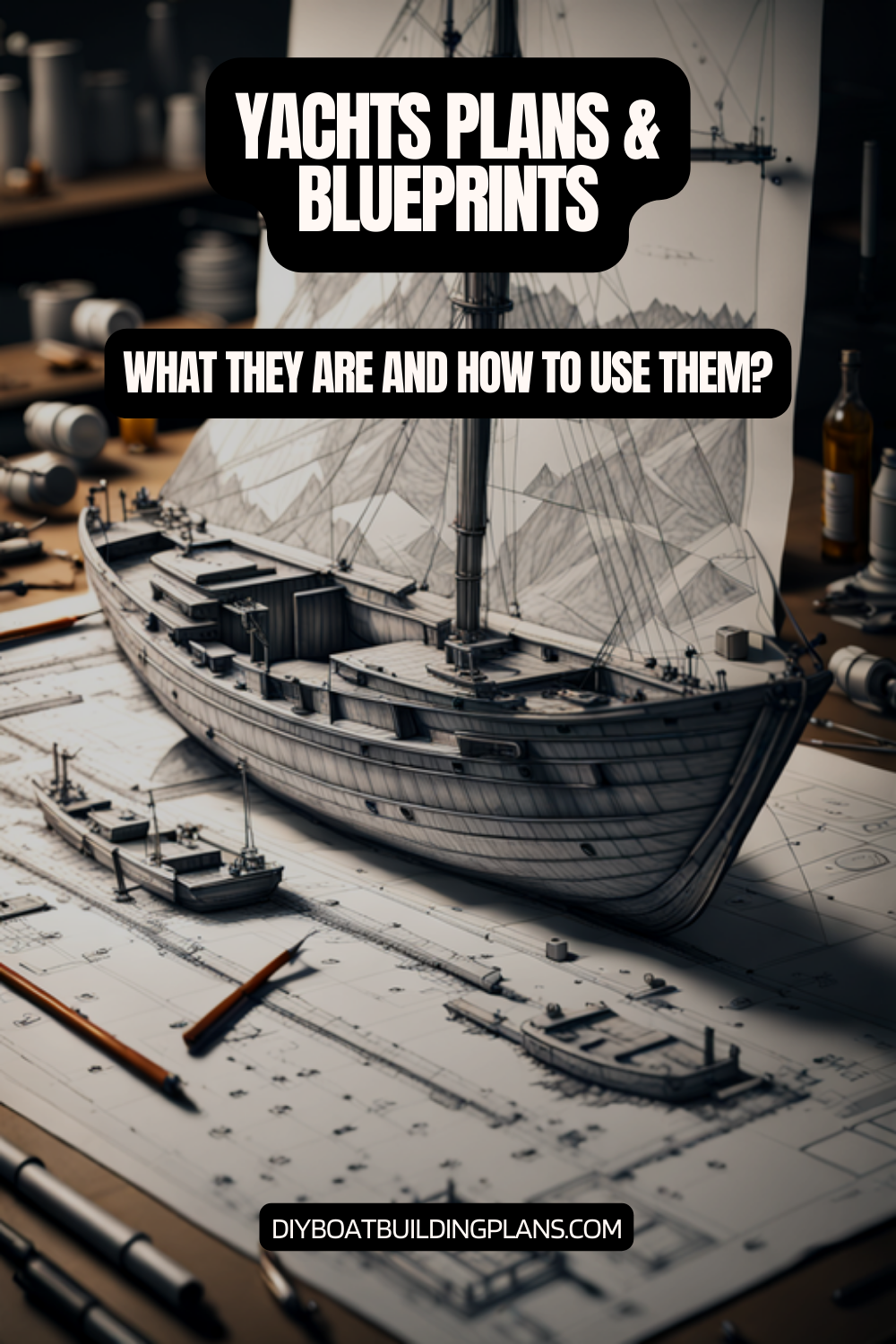
Conclusion – Yacht Plans & Blueprints
In conclusion, yacht plans and blueprints are essential tools for anyone looking to build their own yacht. These detailed documents provide the necessary guidance and structure to ensure a successful build. Yacht plans and blueprints offer numerous benefits, including safety considerations, accuracy in measurements and specifications, and cost-effectiveness. When choosing yacht plans and blueprints, factors such as the size and type of yacht, skill level of the builder, and budget need to be considered. It’s important to understand how to read and interpret yacht plans and blueprints to ensure accurate construction. Yacht plans and blueprints play a crucial role in the yacht design process, facilitating collaboration between the designer and builder. Customizing yacht plans and blueprints allows builders to personalize their yacht to suit their specific needs. Using plans and blueprints for DIY projects offers cost savings, personalization, and the satisfaction of building your own yacht. Quality yacht plans and blueprints can be found online, through yacht design firms, or at boat shows and events. Cost considerations should also be taken into account when selecting plans, with budget-friendly options available. In conclusion, yacht plans and blueprints are invaluable resources for anyone embarking on a yacht-building project. They provide the necessary guidance, safety considerations, and personalization options to ensure a successful build. By utilizing these plans, builders can bring their vision to life while saving costs and experiencing the satisfaction of building their own yacht.
FAQs – Yacht Plans & Blueprints
What are yacht plans and blueprints.
Yacht plans and blueprints are detailed drawings and diagrams that provide a comprehensive guide for building a yacht. They include information on the yacht’s design, dimensions, materials, and construction techniques.
Who uses yacht plans and blueprints?
Yacht plans and blueprints are used by boat builders, yacht designers, and individuals who want to build their own yacht. They are also used by naval architects and engineers who are involved in the design and construction of yachts.
What information is included in yacht plans and blueprints?
Yacht plans and blueprints typically include information on the yacht’s hull design, deck layout, rigging, propulsion system, electrical system, plumbing system, and interior layout. They also include detailed drawings of each component and instructions on how to assemble them.
Where can I find yacht plans and blueprints?
Yacht plans and blueprints can be found online, in books, and through yacht design firms. Some yacht design firms offer custom plans and blueprints based on the client’s specific needs and preferences.
Do I need any special skills to use yacht plans and blueprints?
Building a yacht using plans and blueprints requires a certain level of skill and experience in boat building . It is recommended that individuals who want to build their own yacht have some prior experience in woodworking, fiberglassing, and other boat building techniques.
How long does it take to build a yacht using plans and blueprints?
The time it takes to build a yacht using plans and blueprints depends on the size and complexity of the yacht, as well as the builder’s skill level and available resources. It can take anywhere from several months to several years to complete a yacht build.
Written by DIY Boat Building Plans

Yacht Painting Tips

Yacht Polishing Tips

Land Yacht build Plans
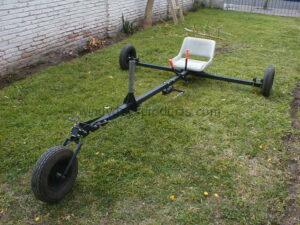
These detailed instructions will allow you to construct this land yacht in a few days. This is a great project for the do-it-yourself. The whole family can help in the construction and it will give everyone a feeling of ownership. And the best part: It’s very affordable to run!
The position of the rear wheels axles gives it a low center of gravity and very predictable cornering behavior. And as this land yacht has been integrally designed considering the sail tester results (click on “The Sail Tester” button above), it was calculated to have the best stability for beginners and family use.
You can easily build this land yacht yourself with these comprehensive plans. I’ll give you the 3D CAD drawings and dimensions of every part that needs to be made, along with lists of materials, cutting lists and detailed building instructions. Everything you need to build your own landyacht. Plans and instructions are clear and are very easy to follow.
These plans are high quality C.A.D designs (Autodesk-INVENTOR). They have been formatted to be read using adobe reader. It’s a simple but effective land sailer to build with basic materials. I think you will really enjoy building and riding it as well.
I look forward to helping you with your project. So if for any reason during construction you have a question, just e-mail me.
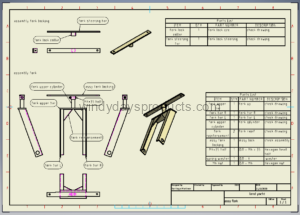
Get the Landyacht Build Plans
GET the Land Yacht complete and detailed construction plans, instructions and lists of materials (.pdf)
Feel the speed, just 10 cm off the ground..
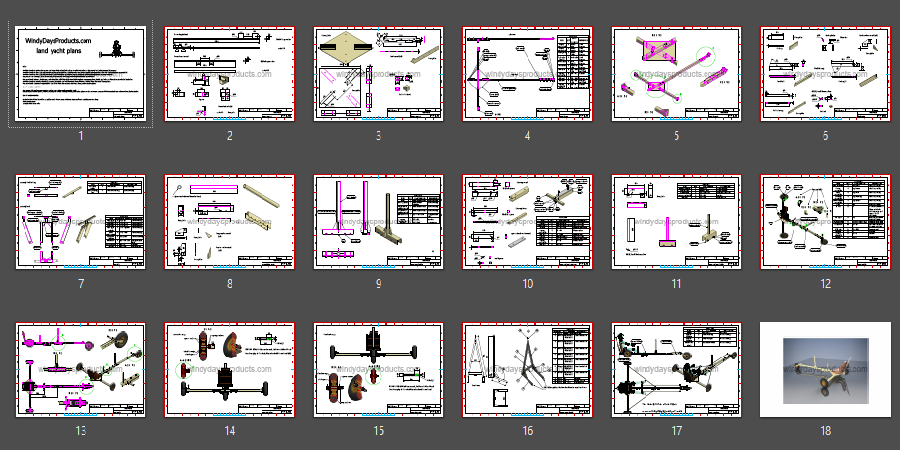
The manual include step-by-step progressive construction drawings with sub-assemblies, weldments, angles etc… Basically, you start at the beginning of the plans & work your way through step-by-step. Frame drawings show you how to start by making a tube base frame and then progressively build upon that starting point.
All materials are readily available worldwide. Tube notches are NOT needed to build the frame (they are all straight cuts). Lathe work is NOT needed for this project.
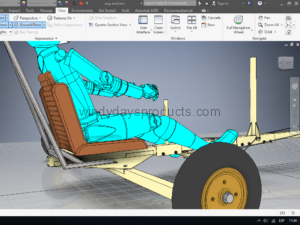

Building a yacht: superyacht construction process
Building Your Own Yacht Process, Superyacht Construction, Marina Architecture, Buildings
Building A Yacht Of Your Own
29 June 2020
Building A Yacht Of Your Own – What Is The Process?
29th June 2020 – Imagine building your very own superyacht, designed to your specific needs, tastes and desires. While building a yacht is more complex and may take years of research and planning than buying new yachts or motor boats for sale , it will also be as exciting and fulfilling as all the future journeys you will enjoy onboard it. But where to start? How do you go about tackling your very own superyacht construction to realise your own new build yacht ?
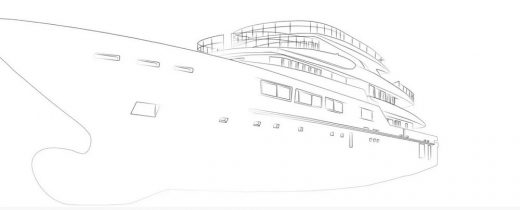
A Look Into Building A Yacht – How To Go About It?
Every custom-built superyacht starts with a vision, based on personal preference and taste, and the type of onboard lifestyle desired. What kind of cruising is required, which luxuries would you like onboard, for example a spa or swimming pool, and is a helipad necessary? With a world of options to consider, the future owner will naturally be the driving force behind their own superyacht construction, but to ensure the smoothest journey possible, they will need a team of experts to work on such a big project.
The Superyacht Construction Team – Key Players
The process of building a yacht will involve a great number of decisions, so having the support of a knowledgeable and experienced team is imperative.
The owner may wish to engage a respected yacht broker to build the team, knowing that they spend a significant amount of time liaising with key players across the yachting industry. They will also ensure the owner’s interests are protected, while providing access to some of the world’s most exciting and ground-breaking yacht builders.
Key players will include a professional yacht designer and naval architect, who will be chosen depending on the type and style of superyacht construction required. An engineer will be engaged for detailed design, and an interior designer will need to work in conjunction with both, designing the layout and cabin suites to meet the owner’s requirements.
You will also need to engage an owner’s representative to oversee the superyacht construction on your behalf. In some cases, the vessel’s future captain may take this role, and offer guidance and reassurance throughout the design and construction stages. They will also negotiate the most favourable terms and protect the buyer’s interests.
Dedicated Project Management Team for Building A Yacht
In addition, when building a yacht, a project management team will be engaged to oversee the day-to-day details, from coordinating the production of the technical specs to running a tender process with shipyards, through to price and contract negotiations.
As the superyacht construction progresses, they will act as the go-between for the different parties involved, and ensure that every element of the project is handled efficiently and to the highest standard. Some will work full time, while others with short-term specialisms may be engaged during particular phases of the build.

The Shipyard – The Heart of Superyacht Construction
The shipyard is where the superyacht construction finally gets underway, using its state-of-the-art equipment, experienced representatives and skilled craftsmen. Involved from the design stage, the shipyard will work closely with the project manager and/or owner’s representative, as well as both the interior and exterior designers to ensure that the end result not only fits the owner’s specifications, but also meets marine legislation and technical requirements.
With the complexities of changing international legislation, it is the project manager’s job to liaise with all parties to ensure that everyone is kept up-to-date on any necessary design changes or alterations.
The Legalities
An experienced team of maritime lawyers will be engaged to write contracts that set the guidelines for the build and protect the buyer from technical issues and delays. Detailed build milestones and payment schedules will also be drawn up. On the vessel’s completion, lawyers will advise on flag registration and handle all other regulatory aspects, as well as the operational setup and ownership structure.
Sea Trial – Exciting & Essential
After successfully building a yacht to the owner’s requirements, surveyors will be needed to establish the vessel’s performance and seaworthiness during a sea trial, an essential part of the construction of any new superyacht. During a sea trial, all parties work together to fine-tune the systems and iron out any issues.
Typically a sea trial takes place on open water and can last several days. The yacht’s crew will usually be engaged six months to a year before completion, and will play an integral part in putting the superyacht through its paces. These will include testing the vessel’s speed, manoeuvrability, equipment and safety features.
Also present onboard will be technical representatives from the shipyard as well as those from any major systems used, the owner’s representative, and governing and certification officials.
The certification officials are employed by a classification society, a third-party service that assures the quality of construction – the nautical equivalent of an MOT. The classification certificate they issue will be required for registering the yacht and obtaining marine insurance. It may also be required before entering certain ports or waterways, and will be of interest to future charterers and potential buyers.
Owner’s Supply
Most custom yacht contracts do not include what is known as the Owner’s Supply – any additional items the owner desires after building a yacht, such as tenders and water toys, audio-visual and entertainment systems, loose furniture, tableware, and decorative objects. Each will need to be procured, insured, managed and integrated into the yacht itself before final delivery.
Building A Yacht – The Final Delivery
At last the big day arrives: the superyacht is delivered to her delighted owner, and launched with much fanfare and celebration. The proud new owner is now free to enjoy their very own, truly unique superyacht out on the open water.
The process of building a yacht might be a complex, long-term commitment and a major investment, but a custom-built vessel is limited only by the owner’s imagination. For all the effort and work involved, there can be nothing more thrilling than realising a new build yacht that fulfils all your dreams and requirements, enjoying it with family and friends for many years to come.
Boat Design Articles
Guide to best European shipyards
New Yachts 2018
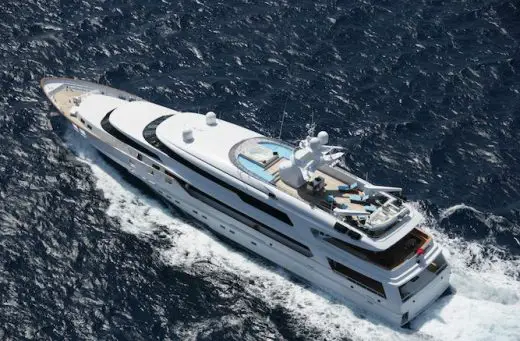
Yachtsman’s House on the Isle of Wight
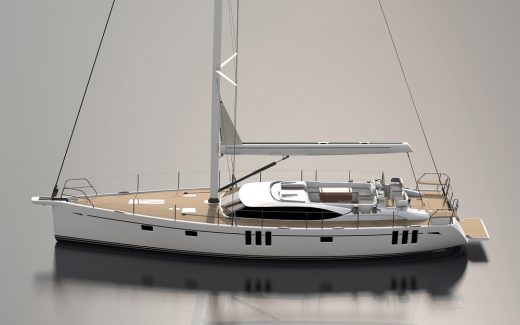
Marina Architecture
Building a Superyacht
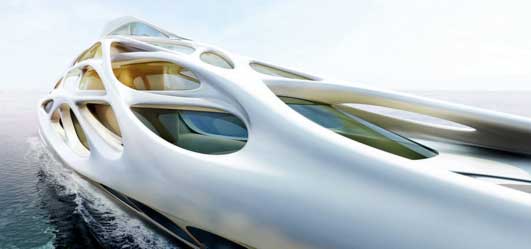
Boathouse Articles
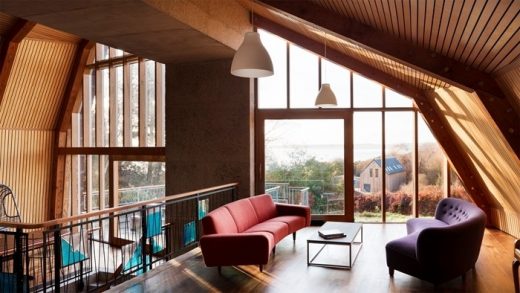
Comments / photos for the Building A Yacht Of Your Own – What Is The Process? page welcome

Build a Yacht
Do you plan to build a yacht of your own.
If yes, read this guide on new yacht construction.
We will go through stages of a superyacht new build and discuss important points that every yacht owner or owner representative needs to know when commissioning custom yacht construction.
New Yacht Construction in a nutshell
Why build a yacht? The answer to this question is slightly different for every superyacht owner. One aspect is true for all: only a fully customized superyacht which was made specifically for you will perfectly fit all of your requirements and tastes.
If you are not satisfied with serial production yachts and seek that unique superyacht to call truly yours – then building a yacht is for you.
Superyacht build is an exciting process which only a handful of people in the world are lucky to experience.
There is nothing like seeing your own superyacht coming to life, first on paper in form of superyacht designer drawings, and then for real at the superyacht shipyard.
New yacht construction is a lengthly and sophisticated process which can take several years to complete. Thus it is very important for every superyacht owner to understand ins and outs to prevent unnecessary mistakes.
We at Yachtowner.co prepared a guide through superyacht build process for you. Let’s dive right in!
Build a yacht. Where to start
Why build a yacht.
Always start your superyacht new build process with why. The better you understand yourself, the easier it will be for superyacht professionals to satisfy your needs.
Why do you want to commission new superyacht construction? What drives you? How are you going to use your boat? What are your requirements? Sit down and make a list of things you would like to see at your new superyacht. Let your dreams flow and capture them on paper.
Look at your requirements and rate them. Group all your requirements into groups: “absolute must have”, “desirable”, “nice to have”. This grading will help yacht designers and shipyard understand your priorities and focus on the right things. Add information about numbers of cabins, speed, cruising range of your yacht, maximum noise and vibrations levels, and anything else which comes to your mind.
Save photos and descriptions of other yachts you like, including finishings type and quality. They will later serve as benchmark for a superyacht designer.
Try to describe the use of your boat in 1 or 2 sentences. A “floating home for my family”, a “fast and furious party boat”, or “an expedition vessel to explore arctic regions”? Give your new luxury boat your personal twist!
Successful yacht build starts with clear communication
By the time you decide build your own yacht, you should already have tried out chartering different yachts or owned some of second hand yachts.
As with anything else, in yachting it is also better to gain maximum experience, yachting knowledge and understanding of your needs, before you start your first large project.
How can you know what you want, if you don’t know which options are available? If you are just starting out in yachting, read our article How to Buy a Yacht .
Yacht design is all about compromises. Aiming to build the fastest boat, for example, implies limiting its overall weight. It means less additional lifestyle appliances on board.
To maintain the speed, a stronger engine is required, which means more fuel storage and less inside space. There are many examples of compromises like this.
Due to its high quality and sophisticated finishings, superyacht construction is much more labour intense than construction of any other type of vessel. Executing change requests gets expensive very soon.
Also, unlike in serial production of planes or cars and due to uniqueness of your boat, the shipyard does not have possibility to fully standardize the production process. Solutions can not be tested for various hundreds of times before the building begins. The shipyard just has one shot to get things right.
The more specific and detailed your understanding of your own preferences, the clearer and faster your communication about them, the better job your superyacht designer, architect and shipyard will be able to execute.
Superyacht Build: Choose the Right Team
You are about to sign a superyacht construction contract which will tie you into working with a shipyard for the next couple of years. Make sure you choose the right people! Superyacht building team can make or break the project.
In general, you will be working with a number of different experts from the superyacht industry during the next couple of years. They will surely have deep knowledge in their specific spheres of expertise.
Surrounding yourself with experienced professionals with no conflict of interest and simultaneously educating yourself on yacht building process will make you feel confident and comfortable in such a specific setting.
Always ask questions, clarify things you might not understand. Maritime industry is full of jargon. It’s ok not to know specific terms. It is much better to ask rather than to not be able to follow a discussion.
Professionals build the yacht for you, but in the end, it is your yacht. You want to make sure that you get the boat of your dreams and have enough knowledge on how it functions.
As a future superyacht owner, you probably already have your favorite yacht designers, naval architects and superyacht brands. If not yet, then check out our Comprehensive list of 195 Superyacht Brands to discover some of the world’s best superyacht builders.
How to Build a Yacht: Design Phase
Now when you already have put your first thoughts on paper, it’s time to make first contact with a superyacht designer and/or a naval architect.
A superyacht designer is responsible for creating an attractive and practical design for your future yacht. A naval architect is typically a professional engineer in charge of construction, design and repair of yachts.
If optical appearance and interior design is your focus, yacht designer might be appropriate to hire. If instead you want to incorporate non-traditional and sophisticated technical elements into your yacht, a naval architect is the right person to contact.
Take the list of your preferences that we discussed in the beginning of this guide and visit several superyacht designers and architects. Browse through previous yacht projects in their portfolios. Make sure that he or she has enough experience in designing similar types of yachts.
Choose two or three best companies. Ask them for preliminary drawings and estimates of fees, and compare. Choose the one who suits you best.
Then visit a superyacht insurance agent and a classification society surveyor . Yacht insurance decides whether the yacht is ready to launch. Classification society is an entity which monitors that the yacht is built according to highest standards and quality.
The surveyor checks if the shipyard builds your yacht to the best quality. It is in your interest to involve these two stakeholders already in the beginning of the process, to avoid unnecessary hassle from the start. Show them the first drawings and specifications of the new yacht that you got from the designer/architect, and ask how they work and what else they need.
Clarify yacht financing . The majority of privately owned superyachts are financed by some kind of a bank loan. It is a savvy financial decision to finance your superyacht by a bank loan.
By negotiating good loan conditions, you can keep your own cash and invest it into a better performing asset classes with higher returns. There is a number of financial institutions worldwide which specialize in superyacht financing.
Think about the flag of your future superyacht . In which country will it be registered? Will it be a Red Ensign Flag ? Choice of the country of registration will affect legal status of your superyacht, so choose carefully.
We cannot stress enough how a well-executed and detailed yacht design is crucial for the following yacht construction! Before starting to build a yacht, one needs to run a full check of all documents, specifications and plans. The better you prepare on this stage, the smoother the yacht building process will be.
Build a Yacht: Shipyard & Construction
The big decision alongside the choice of yacht designer and naval architect, is undoubtedly, the choice of shipyard . This is the manufacturer of your future custom superyacht. The shipyard plays an immense role and has responsibility to deliver your new yacht the way you want it.
Once the preliminary design of your yacht is ready, you can start looking for a suitable shipyard to build your yacht.
How to choose a shipyard to biuld a yacht? Which yacht brand is the best for you? Look out for the following points:
- Shipyard size
- Shipyard’s preferred size of yachts
- Years on the market
- Previous experience in building similar yachts as yours
- Delivery schedule
- Own design team
- Reviews of previous clients
- Resale value of yard’s previous yachts
- Project management skills
- Who is the project manager? Do our personalities fit well?
- Are processes in place?
- ISO standards & compliance
- Procurement department & policies in place
- Financial stability of the shipyard
- Do I have a good feeling with the shipyard?
There is quite a variety of shipyards in the world and it can become a daunting task to choose the best one for you. Send your inquiry to several shipyards, and narrow down your choice to 3-4 best ones based on their answers. Get more details and specifications from them and choose the best shipyard.
The shipyard will assign a project manager and a team to run the building of your new custom superyacht.
The project manager is an employee of the shipyard and is the key person who runs the construction of your yacht. His task is to project manage the build, to make sure everything sticks to schedule and there is no significant cost overrun, and to maintain communication with the owner’s representative.
Cooperation between project manager and owner’s representative is key in successful superyacht construction. Whereas the owner’s representative has power to act on owner’s behalf, the shipyard’s project manager is the one who runs the show on shipyard floor.
Visit the shipyard personally and talk to the general manager and the potential project manager (the latter reports to the former).
Take a look at the facilities. Try to find out how the processes at the shipyard are managed. Are proper project management procedures established? Are processes structured and responsibilities clear?
The better the organization of shipyard’s work, the more likely is your new custom yacht to be completed up to your expectations. One of the ways of finding it out is asking for previous client’s opinions. Ask the shipyard if they can share such contacts with you.
The team will prepare a project plan and a project schedule. After that the execution will start. This is a long, sophisticated but a very exciting process, when you will finally see your yacht materializing.
It is good practise to have a yacht engineer or captain who will be working on the yacht after completion to be part of the team during construction. His detailed knowledge of the new yacht will be invaluable for its daily operation after the handover.
Visit the shipyard once in a while and take photos of different stages on construction. What exciting memories to look back at!
During the yacht construction phase, you are likely to submit some changes. Some issues might arise. But don’t get demotivated, it is normal with a project of such scale.
Proper execution control mechanisms and processes will allow your team to identify potential issues at early stages, while it is still relatively easy and cheap to fix them.
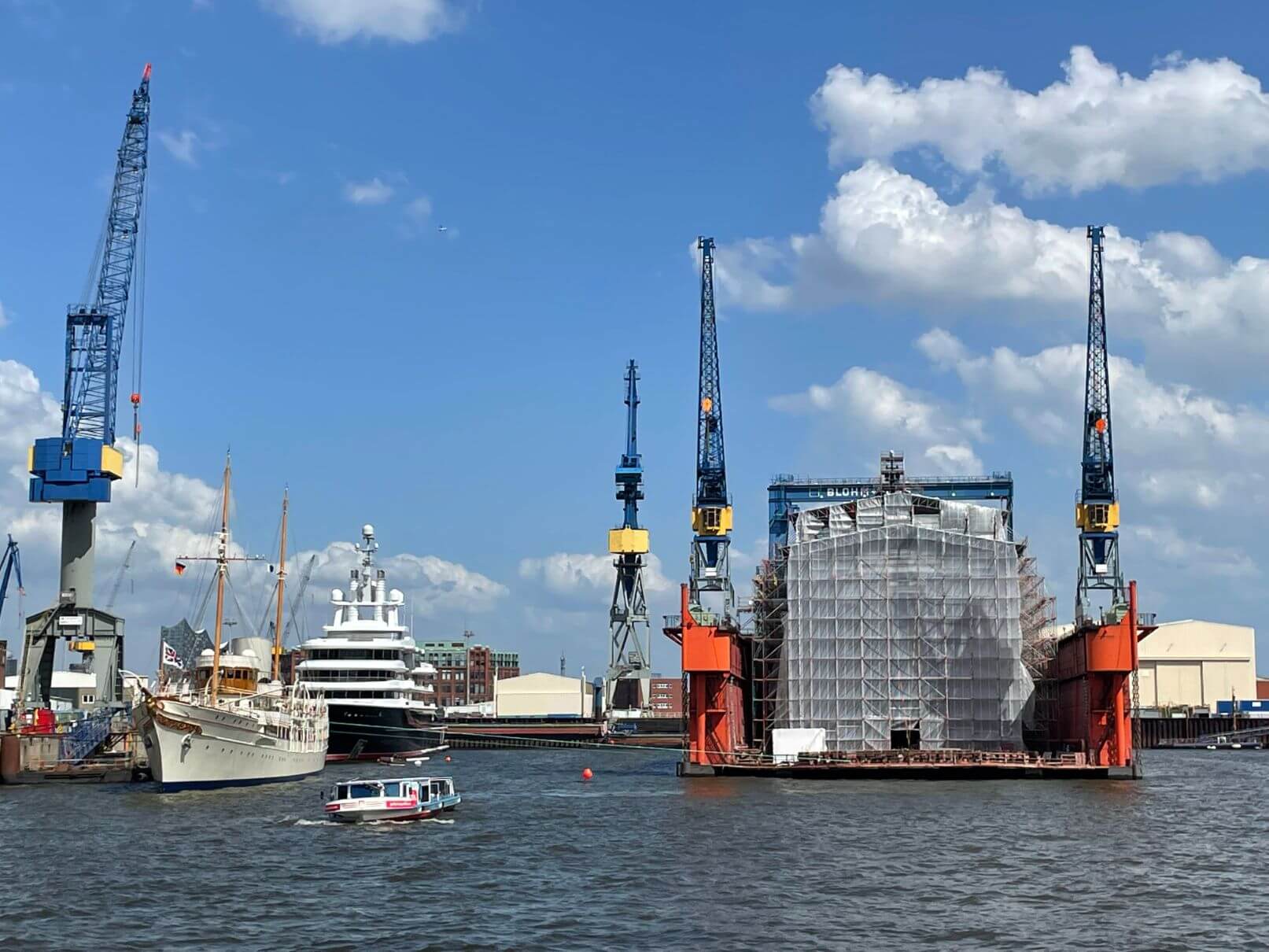
Build a Yacht: Sea Trials & Closing
Finally the construction of your custom superyacht is completed. We know you can’t wait to see your beauty on water!
Launching is the day when your new yacht is put in the water for the first time. It is an exciting and very important moment, which needs to be carefully planned by the shipyard.
Now the yacht needs to be tested in action. This is a period of sea trials . For several weeks, all systems of your new yacht will be tested in operation. This is the final complete technical check of your new luxury boat. Some fixes might be done during this period.
As with a brand new car, some systems on the yacht will take longer time to be fully tested in action. Some fine tunings will surely also be done during the first and second years of your superyacht’s lifetime. It is absolutely normal.
Handover is the final stage of yacht construction project. This is when you sign the final acceptance of the yacht, probably with a list of things which still need to be fixed in the upcoming weeks.
With the handover of the yacht, also all its documentation has to be handed over to you or your team. This includes all the plans, drawings, sea trials results, manuals to all the systems and appliances on board.
Your crew has to have access to all these documents to be able to comfortably transition to the new build yacht.
Give your captain and crew some time to accommodate onboard and get accustomed to the new yacht.
Now you are finally ready to make the first voyage on your new custom superyacht , the moment you have been waiting for so long.
Congratulations!
Build a Yacht: Contract is King
Yacht construction documentation.
When it comes to building a yacht, paperwork matters. With such a large project, all the parties involved are interested in having everything clarified on paper before yacht construction starts.
Unclear or conflicting conditions, missing clauses, mess in communications and emails can substantially complicate building of your yacht. As well as make it much longer and more expensive.
Work with lawyers that have been working with yacht building projects before. They will advice on how to setup contracts, which paragraphs and attachments to include.
You should have the following documentation package: contract, scope of work, technical specifications, terms and conditions, regulations, contract drawings, classification rules, standards, and execution page.
Due to the nature of new yacht construction projects, roles and responsibilities of different stakeholders can overlap. Best practice is to include description of roles and responsibilities of every stakeholder in an attachment to contract, to avoid confusion.
Make sure you understand every clause in the contract personally. The language might be very specific, but knowing what you sign is absolutely crucial, even if you trust the professionals you hired.
In the end, you are the owner and end beneficiary. It is your yacht and your money, you should know what you are signing for.
Keeping all documentation saved and filed properly might be boring, but it is so important! With a project of such magnitude, paper chaos can come quite fast.
Shipyard will file documentation on their side, but your representative should also have own filing system to make sure you have all papers at hand.
Also, after the yacht construction is completed, as-built documentation shall be handed over to you.
Making changes while you build a yacht
Trust us, no matter how well you planned your new custom yacht in advance, you will want to change at least something later.
Change orders and how they will be handled in the building process are an important part to put down in the contract. Having clear rules on how change orders shall be handled and paid for will significantly ease the process. Make all your changes in writing as an attachment to the contract.
Generally, the fewer change orders you make, the better. The sooner they come during the yacht build, the better. They will also be considerably cheaper to implement.
Just think of how much will need to be redone, if you decide to make changes in hull structure once the yacht is almost finalized, interiors are finished etc.? It might be cheaper to build a second yacht…kidding, but you get our point.
Superyacht Construction: Comfort Onboard
Stabilizers.
Comfort on board of your yacht is central to enjoyment of trips and cruises! Seasickness is sadly something that many people get and it can ruin any vacation. No matter how luxurious a yacht, it is still moving in water, and at least some minimal motion will always be there.
Solution to seasickness are stabilizers. If you are sensitive to motion on water, make sure your yacht has a good stabilizer. It will make a great difference in your yachting experience.
There are many stabilizing systems of varous types on the market. Talk to your team at the design stage and later ask stabilizer manufacturer to provide a motion simulation study.
Noise & Vibration
Not so obvious aspect for new yacht owners are noise & vibration levels outside and inside your yacht. We love the speed that strong engines give – but they are loud. Engines cause noise – and so do propellers, generators, bow thrusters, hydraulics, gearbox…
Work with a good noise level specialist when constructing your yacht, to make sure that noise does not exceed your tolerance level. It is much easier and cheeper to minimize noise already during design and construction of your yacht.
Ideally, use another yacht as a reference point for setting acceptable vibration and noise levels. Test it at the dockside and during cruising. When the yacht is moving, you will hear not only the engine noise, but also sound of waves hitting the hull, wind, propellers.
Specify maximum sound levels in every cabin in the yacht building contract. Most people prefer to have at least some noise level in the cabins, not to feel too locked out of their environment. Also, getting below specific levels gets very expensive, and will probably be unnecessary.
Superyacht Build Success depends on Yacht Owner’s Involvement
Yes, as the future superyacht owner you also have an important role to play in superyacht construction. Only with your active involvement in the project, can the yacht designer and shipyard get all the important information and approvals in time and deliver great results.
Only by knowing what a perfect yacht means specifically for you, can they build this perfect yacht.
If the personal time you are willing to spend on the project is very limited, hire a knowledgeable representative.
Owner’s representative is a key stakeholder in a new yacht build, alongside shipyard’s project manager. Owner’s rep is the major contact point for all the other stakeholders. Make sure he or she has necessary experience, knowledge and power to represent you and make decisions on your behalf.
Yacht owner’s representative should be on pulse of construction schedule, cost, and current stage of the building process. Cooperation between the owner’s representative and the shipyard’s project manager is a key relationship in any superyacht new build.
In short: completing a successful superyacht build is only possible with active cooperation from the owner’s side. There are quite a number of new build projects that run into issues due to lack of owner’s participation.
New yacht construction is your biggest dream coming true, it’s fun to take active part it in!

Yacht Construction: Frequently asked questions
What does a custom yacht mean.
A custom superyacht means a yacht which is designed and build specifically to your requirements. A custom superyacht is unique. If you commission building a custom yacht, there will be no other yacht like yours in the world.
How long does it take to build a yacht?
Superyacht construction times vary depending on the size and complexity of the boat . It can take anything from 2 to 5 years to complete building of a custom superyacht.
How much does it cost to build a yacht?
New build custom made superyachts are more expensive than serial production or semi-custom yachts. Their prices can go up to several tens of millions of dollars on average. Exact price range depends on the yacht size, complexity and finishings. The largest yachts in the world cost considerably more than a hundred million dollars, reaching over a billion dollars for the most expensive ones.
Who is involved in a superyacht build?
Yacht owner, owner’s representative, superyacht designer, naval architect, shipyard (full team typically led by a project manager), lawyers, insurance agent, superyacht financing specialist, classification society surveyor, possibly superyacht broker , superyacht captain & crew, to name the main stakeholders.
What are the best superyacht manufacturers in the world?
There is quite a number of prominent shipyards with expensive experience of building superyachts in the world. The exact choice will depend on the size of yacht, your preferences, budget and taste. With superyacht manufacturers, there is no one size fits all, but there are market leaders. Browse through our Comprehensive list of 193 Superyacht Brands to choose your favorite.
Summary: Build a Yacht
In this article, we discussed new superyacht building process from the yacht owner point of view. We highlighted main points you should keep in mind to avoid common mistakes during yacht commissioning and construction.
It is beyond the scope of this article to list all the important aspects of building a yacht. Hiring an experienced superyacht consultant will significantly ease the yacht build for you.
Get the best superyacht professionals onboard, stay curios and ask questions. With every completed yacht new build you will gain your own experience and know your yachting needs better. We know some serial yacht owners who complete a new yacht build project every couple of years. It’s fun!
And last but not least: building your own superyacht is such a unique adventure, which only few people get to experience. The absolutely main thing is to enjoy it to the fullest!
Do you have questions we have not covered?
Ask us in the comments below, or contact us directly at [email protected] ! We will define your needs and find the best solution together!
Article by Yachtowner.co
More Articles

Superyacht Brokers List

Comprehensive List of 193 Superyacht Brands
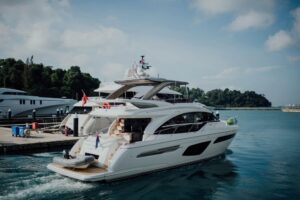
Should I Buy a New or a Used Yacht?

Yacht Types And Sizes
Leave a reply cancel reply.
Your email address will not be published. Required fields are marked *
Save my name, email, and website in this browser for the next time I comment.
Yes, add me to your mailing list
Privacy Overview
Build Your Own Yacht
Please refine your search or simply email us or call 1 954 525 5111 and we'll immediately put you in contact with one of our yacht specialists to discuss your enquiry.
ADVANCED SEARCH
- ABOVE 400'-200'
- MID RANGE 200'-150'
It’s Time To Build Your Own Yacht
If you’re ever trying to rationalize a reason to build your own yacht, look no further than your dreams. Think of the places you’ll go. The true beauty of a yacht, sometimes forgotten in her size and her solid feel and homelike surroundings, is that she is a conveyance, a mode of transport that can bring you and your family and friends to anywhere you could wish.
Build A Yacht For Your Lifestyle
Imagine spending the day exploring the meandering, shadowed streets of an old world town, having lunch at a sidewalk café, and showing your children or grandchildren the frescoes of a cathedral you learned about in a college art class (was it really that long ago?), returning to the yacht at dusk for dinner on board, and then an overnight passage, where you wake to discover an island laid out before you, with no other boats around, and a selection of snorkeling gear, standup paddleboards, kayaks, and more at your disposal. Only a yacht can deliver this kind of experience.
Yacht Building Is Your Ultimate Creation
But, why build your own yacht? It’s a good question. When you’re ready to make your mark on both the world and your life, there are few better ways to express oneself than through the creation of something wonderful. And, with a team of professionals dedicated to making your dreams a reality, and guide you through the steps of creating something real, and substantial, and beautiful, there’s no limit to what you can accomplish. To build your own yacht is to embrace your full understanding of the yin and yang of your personality.
New Yacht Construction Specialists
New yacht construction includes the technical specifications you lay out for performance and range, speed and hull volume, class and capability, all with the help of the yachting experts at Merle Wood & Associates who have extensive knowledge and new build experience. They have dedicated their careers to assisting their clients in creating something new and unique. Building a new luxury yacht can be a complex and costly event for someone unfamiliar with the process, which is why having a recognized global leader in megayacht construction on your team, before going to contact, ensures that the right elements are covered.
Custom Mega Yachts
Your custom yacht also comprises the beautiful spaces you will create and enjoy with your family and friends, replete with the welcoming social spaces that will offer unmatched vistas, embracing the sea breezes on the aft deck or from the flying bridge, gathering spots for the whole family that will provide the latest in media technology or a respite from it, as you prefer. How you want to divide your available space between stateroom and bath, closets and seating, galley and on-board gym, family and guests, it’s all up to you.
Build or Buy A Luxury Yacht
Of course, the creative process required to build your own yacht doesn’t happen overnight—and that’s part of the appeal, since the ultimate goal is meant to have an air of timelessness, of real creation, of getting it right. Often a candidate for a yacht-building project will instead buy a mega yacht, and this can be a simpler solution to one looking to step into a situation for the upcoming season. But similar to undertaking the effort to build your own yacht, the purchase process will be aided by dedicated professionals who will look to you for direction.
Luxury Yacht Ownership Awaits
Knowing one’s mind in terms of the required capabilities of the yacht and also the amenities desired will certainly help the process along and may in fact inspire you to consider building your own yacht, especially after one considers the available inventory on the market. After all, it all gets back to you and your dreams. And when you think of the places you’ll go, yacht ownership simply makes sense . The question is not, “ why buy a yacht ? ” The question is simply when and how. So whether you wish to know how to buy a yacht , build your own yacht or buy a mega yacht, the next step awaits.
Speak To A Yacht Broker
To build your own yacht, you’ll want expert guidance from qualified new yacht construction specialists. Merle Wood & Associates have seen the construction (including those now in progress) of more than 60 yachts ranging from 100 feet to more than 500 feet in length. Because of this, we are globally recognized by our piers and clients as leaders in new yacht construction.
- 1-954-525-5111
- web(Contact us at)merlewood.com
- About us
I'm interested in:
Chartering a yacht Buying a yacht Selling a yacht Charter marketing Building a yacht Other
Please leave this field empty.
At Merle Wood & Associates, we focus on providing the best user experience throughout our website for our visitors. We achieve this by using cookies, which store a little information from your browser. If you would like to learn more, please see our privacy and cookies policy .
- Yacht Search
- Charter a Yacht
- Buy A Yacht
- Build a Yacht
- Sell a Yacht
Your Name (required)
Your Message
Please call me Please email me
Your Phone (required)
CANCEL Please leave this field empty.
3D Printed Folding RC Land Yacht - MUSHU

Introduction: 3D Printed Folding RC Land Yacht - MUSHU

This instructable goes through the process of creating a folding RC land yacht through 3d Printing.
This project fits into the IRCSSA class 1 rules (http://ircssa.org/class-standards/) which is a development class of RC land yacht using a box rule (all of the vehicle must fit within 750mm length x500mm width x 1000mm height) This land yacht is designed as a fun simple project to get into RC sailing and 3d printing, not as a regatta leading race machine.
I will walk through the steps of designing this yacht, the principles of which can be applied to custom designing your own land yacht. Feel free to do this if you have the CAD knowledge or take my parts and print these as they are.
For simplicity I have used a mast and sail from an easily accessible RC yacht class. The parts for this could be replaced by a cheaper home built assembly but lightweight and quality masts and sails will make for a better performing boat. The only part that would need to be modified is the mast step which currently accepts a 5mm tube.
The name of this design 'MUSHU' came in part from the rig. The mast and sail are from a Dragon Force 65 (DF65) RC yacht. This project is for the land though, so the first land dragon that came to mind was Mushu from Mulan that has been a regular at my house with a soon to be 3 year old running around.
If you have any questionsn about the project feel free to message me or comment on this instructable.
- 3d Printer or access to someone with one.
- Lighter or matches
- Drill and bits
- Adjustable Spanner
- Phillips head screw driver
- 3d printer filament (approx 300g used)
- Aluminium bar 10mmx3mm section approx 1m needed
- Dyneema cord 3m - https://www.hobbywarehouse.com.au/joysway-881204-df95-0-6mm-dyneema-cord-10m-length.html
- 6x 4Gx9mm screws (to attach servos)
- 2x 8Gx16mm screw (rear wheels)
- 8x M3x20mm bols (to join hull parts and Aluminium bars)
- 6x M4x10mm bolts + nuts (to join Aluminium bar to hull)
- 2x M5x30mm bolt (for Front wheel assembly)
PURCHASED PARTS
- 608 Bearings - https://www.kogan.com/au/buy/acosecommerce-10x-608rs-skateboard-roller-scooter-sealed-ball-longboard-skate-bearings-wheels-dks-sk8-wheels-10x/
- Sail Servo - https://www.hobbywarehouse.com.au/joysway-83014-servo.html
- Steering Servo - https://www.hobbywarehouse.com.au/dynam-17g-servo.html
- On/off switch - https://www.hobbywarehouse.com.au/joysway-881529-dragon-force-65-v6-switch-rod-with-rubber-bellow-and-switch-connector-set.html
- Bowsies - https://www.hobbywarehouse.com.au/joysway-881210-df95-bowsies-pack-of-10.html
- Trasmitter & Receiver pack - https://www.hobbywarehouse.com.au/joysway-880515.html
- Battery Pack
- Reusable batteries to fit above + Charger
- DF 65 B rig assembly - https://www.hobbywarehouse.com.au/joysway-880563-df65-v5-complete-b-rig-assembly.html
- DF 65 B rig Sails - https://www.hobbywarehouse.com.au/joysway-881510-dragon-force-65-v6-b-printed-mylar-sail-set.html?gclid=Cj0KCQiAjc2QBhDgARIsAMc3SqThDtDNUXOsHUjNt05B7USZmftN0spW6BOD--vNNPlIB6P5TDnDolAaAoU2EALw_wcB
Step 1: Design (Skip If Using Provided 3d Print Files)

The first step in designing this land yacht was assembling all the required RC gear. This really dictates the layout and physical size of your land yachts ‘body’
For a functional land yacht you only need a very basic RC setup:
- 2chanel transmitter & receiver
- 1x battery pack
- 1x servo switch (on off switch)
- 1x steering servo (i used a 17g servo)
- 1x sail control servo (I used a 37g servo)
If your like me you wont be able to resist plugging everything in and seeing how they move… Go for it. This will help you see what your servo’s range of motion is.
Playing around with different layouts for the parts early on helps get an idea of what the body shape could be to accommodate all the RC gear. The second image in this step with multiple assembled layouts shows a couple of different options I played with before settling on the compact option at the bottom.
Once I had all the parts assembled I arranged them roughly where I thought they could go and measured the overall dimensions. This became my guide for the body (see plan view sketch image). with key internal dimensions.
My final shape looks a lot more refined than the orange box shown in the images. However these early prototypes were really helpful to see the RC parts inside this box. This showed me which areas had heaps of extra space, where wires could run etc and from that I was able to remove some of this empty space and create a more curvy design (See sketch and two part image)
While this shape worked and everything fit inside nicely, I wasn't happy with the amount of support material needed to print the hull. I changed the model and turned the two part hull into a three part hull. This meant that very little support material was needed for the print, but the model now could be printed with a coloured middle section adding a bit more interest to the project. Win win! (See CAD images)
Figuring out how to join the main hull to the wheels was relatively straightforward. I had some Aluminium 10x3mm solid section spare from another project that I wanted to use. I designed the additional parts to accept these with small bolts used to hold them in place. There was a lot of trial prints to get all of this right. The final image shows a bunch of the bits and peices that I printed on the way to the final design.
For the Wheels I made my own hubs to take some bearings in an attempt to get them running a bit smoother. The sizes of some of these parts will vary depending on what wheels etc you have on hand. I made my wheel hubs fit these tires - https://www.amazon.com.au/gp/product/B09D3NNGKJ/ref=ppx_yo_dt_b_asin_title_o04_s00?ie=UTF8&psc=1
Feel free to use whatever wheels you can get your hands on. I have read a lot of guides on roller blade wheels being ideal for RC Land yachts.
Step 2: Print All the Parts!

If you are going to design your own parts then you have quite a few hours of fun ahead of you. Otherwise use the parts attached here that I have designed and you have quite a few hours of printing ahead of you!
Most of these pieces have been designed to print without support. See below at the end of this step for quantities, support and infill settings that I used. Feel free to play around with these settings as you see fit. I haven’t had any breakages from the parts on this prototype to date.
Clean up any of your prints that need it with a bit of sandpaper or files. I have left most of mine as they came of the printer as i’m not too worried about the print quality. I printed my parts on an Anycubic Mega Pro with only minimal tuning to date - One day i’ll get better print quality but i’m happy with this for now.
Check all of your nuts fit into the allocated holes on the printed parts, as well as your mast and any bolts.
Most of the nuts should be a bit of a pressure fit but if you want to make sure they always stay in place feel free to take some superglue and fix them in place.
Printing quantities and support:
All parts .16mm layer height. .2 infill.
Hull bottom - 1x. Needs supports for where the steering servo goes only.
Hull middle - 1x. No supports
Hull top - 1x. no Supports
Rear wheel axle - 2x. No Supports but print vertically
Fron twheel attachment point - 1x. No Supports
Front wheel bracket - 1x. No Supports
Front Wheel Axle - 1x. No Supports
Front wheel lock nut - 1x. No Supports
Wheel Hub - 3x. No Supports
M4 Lock nut - 3x. No Supports
Attachments

Step 3: Cut Aluminium Bar

Take your Aluminium bar and cut two lengths at 227 mm long and one length at 400mm long
Give the ends a bit of a sand or file to clean up any scrappy bits your hacksaw may have left.
Dry fit the Aluminium bar into each of the parts that join together and mark holes using the 3d printed parts as a guide to mark where your holes need to be drilled. (check the images later in this instructable if you arent sure where these parts need to line up)
Use a punch and make a point on the Aluminium to help center the drillbit when drilling out holes in the bar. This step helps stop the drill bit from wandering off your mark and leaving your hole drilled out of place.
Drill out each hole and test the fit with your 3d printed parts and nuts and bolts. If need be drill the holes larger to fit everything together.
Step 4: Assembly RC Parts & Hull

Firstly before fitting all the RC gear and bolting the hull parts together, attach nuts inside the base of the hull. Use a little bit of superglue to hold these in place. You won’t be able to access these later in the assembly.
Assemble the RC gear inside the hull. It’s a good idea before you screw the hull together to test the RC gear is all working as desired, Which port on your receiver will determine which control on your transmitter is used to adjust it. Check your transmitter/ receiver manual for information on what to plug in where, also for info on how to ‘bind’ your transmitter to your receiver. Make sure you do this!
With 4xM3x20mm bolts assemble the three parts of the hull together. The fit is tight enough that no nut is needed on the end of these bolts.
Fix the servo’s in place using 4g x 9mm screws. Pan head or countersunk head both work here.
Step 5: Join Aluminium Bars

Flip the hull over and attach the long Aluminum bar to the front of the hull, and the shorter pieces to each side. You can tighten the front two bolts as this won’t move again but make sure the bolts on the arms are firm but not overly tightened. These two bolts as shown are the pivot points when the arms are to be folded up.
Attach the last two points with your M4 lock nuts (See the last image). These are designed to be large enough to screw together by hand. These bolts unscrew to allow the arms to fold in for transport when the rig is off.
Step 6: Assemble Front and Back Wheels

Both back wheels use identical parts and should be assembled as shown (First image). Take the wheel bearing and press this into the tire hub. The inner ring on the bearing will fit over the round part that attaches to the aluminium bar (axel bracket). Fix these in place using a 8Gx16mm pan head screw as shown. Fix the axle bracket to the aluminium bar using a M3x20mm nut and bolt. (You can use smaller bolts in some parts or cut these bolts down but for this instructional i've tried to keep the different sizes of bolts to a minimum)
Assemble the front wheel assembly as shown (Second image) The front wheel uses two M4x30mm bolts, one as the wheel axle and one to attach the steering pivot point to the front bracket that attaches to the Aluminium bar.
Attach your steering arm to the steering servo and attachment point at the front wheel assembly. This might need some fine tuning to get the right amount of turn out of your servo. To get started I used two steering servo arms with attachement points like the one shown here. Then i Taped the two bars together with some duct tape as a temporary hold. This allows you to make some adjustments if need be.
Turn your RC gear on here and let the steering servo center. Unscrew the servo arm and re-attach this in place with the front wheel centered. You should now be able to turn the wheel in both directions an equal amount.
When we get sailing you may find that you need a longer arm on your servo or to use an attachment hole on the front wheel assembly close to the pivot point to get more turn. My turning circle was quite large at first but with some adjustments i'm happy with the turning now.
Step 7: Attach the Rig

Using some fine string (dyneema cord that is used for many model RC yachts is ideal) Attach a jewelry clip or similar clip to both the back aluminium bars and the front aluminium bar. These serve as attachment points for the stays that hold the mast in place.
Tie a reef knot https://www.youtube.com/watch?v=aprfVTaxkk0 to attach this little bit of string and burn the ends of the rope to avoid fraying. Dyneema cord will burn easily so go careful with your lighter here.
Take your Donor mast from your DF65 or similar and fit it into the attachment point on the hull. Attach a forestay and two side stays. And pull them both back to where they attach near each wheel. Tie a loop in the end of one making sure that you are putting a bit of tension on the mast (pulling it backwards) when this loop attaches to the jewelry clips. Pull both stays back to the centre of the boat and tie the other stay at the same length as the first. This will help ensure the stays pull the mast symmetrically backwards. Clip both of the stays into place.
Attach a bowsie to the lower end of your forestay and tie this off so that you can put tension on the mast. Attaching cord to these bowsies can be a bit tricky and needs a nice clean cut on the tip of your cord. If you are struggling with these check out some YouTube videos on tips and tricks for bowsies.
For the final rigging step attach another bowsie to some cord tied to the end of your boom. Attach the other end of this to a jewelry clip or similar and tie a loop of string onto the end of your sail control servo. Make sure to give enough play when fitting the bowsie that your sail can be pulled tight when the servo arm is pulling as tight as it will go as shown in the below image.
All off your rigging is now complete and can be quickly assembled and disassembled by loosening the bowsies and unclipping your jewelry clips.
All that's left to do now is go sailing!
I will be working on a box for my boat to safely store the sail away from damage. Two pieces of cardboard and some tape will do for now!
Hope you have enjoyed this intractable and I welcome any comments or feedback.
- Pre-K & Kindergarten
- Teacher Resources
- Request a meeting
Can a land yacht sail into the wind? Investigate how invisible forces can change an object's motion and how this force acts from a distance.

- Review the online student material. Use a projector to share this material with your students during the lesson.
- Make sure that you've covered Newton’s three laws of motion in an earlier lesson.
- Consider the abilities and backgrounds of all of your students. Differentiate the lesson to make it accessible to everyone. See the Differentiation section below for suggestions.
- Set up the fans on the floor, allowing at least 3 yards in front of each, so the land yachts have room to move. Use a strip of tape to mark a starting position in front of each fan (perpendicular to the fan).
( Whole Class, 5 Minutes )
- Watch the student video here, or access it via the online student material.

- Facilitate a quick discussion about which force makes a land yacht move.
- Which forces did you see in action when watching the sailboat and kite in the video? (pull/push)
- Which force made the sailboat move? (It was the push force of the wind.)
- In what situations does a sailboat not work? (If the wind is blowing straight toward the sailboat, the boat can't sail directly forward into the wind.)
- Tell students that they're going to build a land yacht, and investigate how wind force can change its motion.
( Small Groups, 30 Minutes )
- Ask the students to work in pairs to build the Land Yacht model. Tell them to take turns, one partner searching for the bricks while the other builds, switching roles after each step has been done.
- You can find support for building in the Tips section below.
- Direct them to the three experiments in the student material, and distribute the Student Worksheets (Teacher Support – Additional Resources).
Experiment 1: Downwind
- Ask the students to set their land yachts on the starting line, facing away from the fans.
- Tell them to turn on the fans and to let their land yachts blow downwind (straight away from the fans) and to make observations about their movement. To optimize the land yacht's movement, the sail angle can be adjusted by turning the small gear. The red bushings can also be moved to change the shape of the sail.
- Challenge your students to find the best sail angle and shape for making the land yacht travel the farthest distance.
- Have them record the best angle and shape on their Student Worksheets.
Experiment 2: Crosswind
- Ask the students to set their land yachts on the starting line at a right angle, 90 degrees perpendicular to the fan.
- Have them turn on the fans to see if their land yachts move to the side of the fan. (They'll have to adjust the angle of the sail again to optimize the land yacht's movement.)
- Challenge your students to find the best sail angle, and record it on their worksheets.
Experiment 3: Into the Wind
- Have the students turn their land yachts slightly off the starting line and toward the fan to see which sail angle can make the land yacht drive “upwind” toward the direction the wind is coming from. They can use the angle measurement tool from their sets to measure the upwind angle of the land yacht from the line. With the right adjustments, the students will be able to make their land yachts move upwind, but not directly into the wind.
- Gather your students together to review and discuss their experiments.
- Which angle was best for each experiment?
- What were the limits? (Too much wind at the wrong angle can make the land yacht tip over. That’s why sailboats “reef” their sails to reduce the surface area of the sail, so the boat doesn’t blow over and capsize) .
- Why can’t the land yacht go more than 45 degrees upwind (toward the fan)? (The sum of the force vectors acting on the vehicle pushes it downwind.)
- If time allows, explain the forces at work (force vectors) in detail.
- Allow time for the students to disassemble their models, sort the bricks back into the trays, and clean up their workstations.
( Ongoing Throughout the Lesson )
- Give feedback on each student's performance.
- Facilitate self-assessment.
- Use the assessment rubrics provided to simplify the process.
Observation Checklist
- Measure your students’ proficiency in describing how different forces can change an object's motion.
- Needs additional support
- Can work independently
- Can teach others
Self-Assessment
- Green: With some help, I can describe how an invisible force can change an object's motion.
- Blue: I know I can describe how an invisible force can change an object's motion.
- Purple: I can describe and explain how an invisible force can change an object's motion.
Peer-Feedback
- Using the brick scale above to score each other's performance
- Presenting their ideas and giving constructive feedback
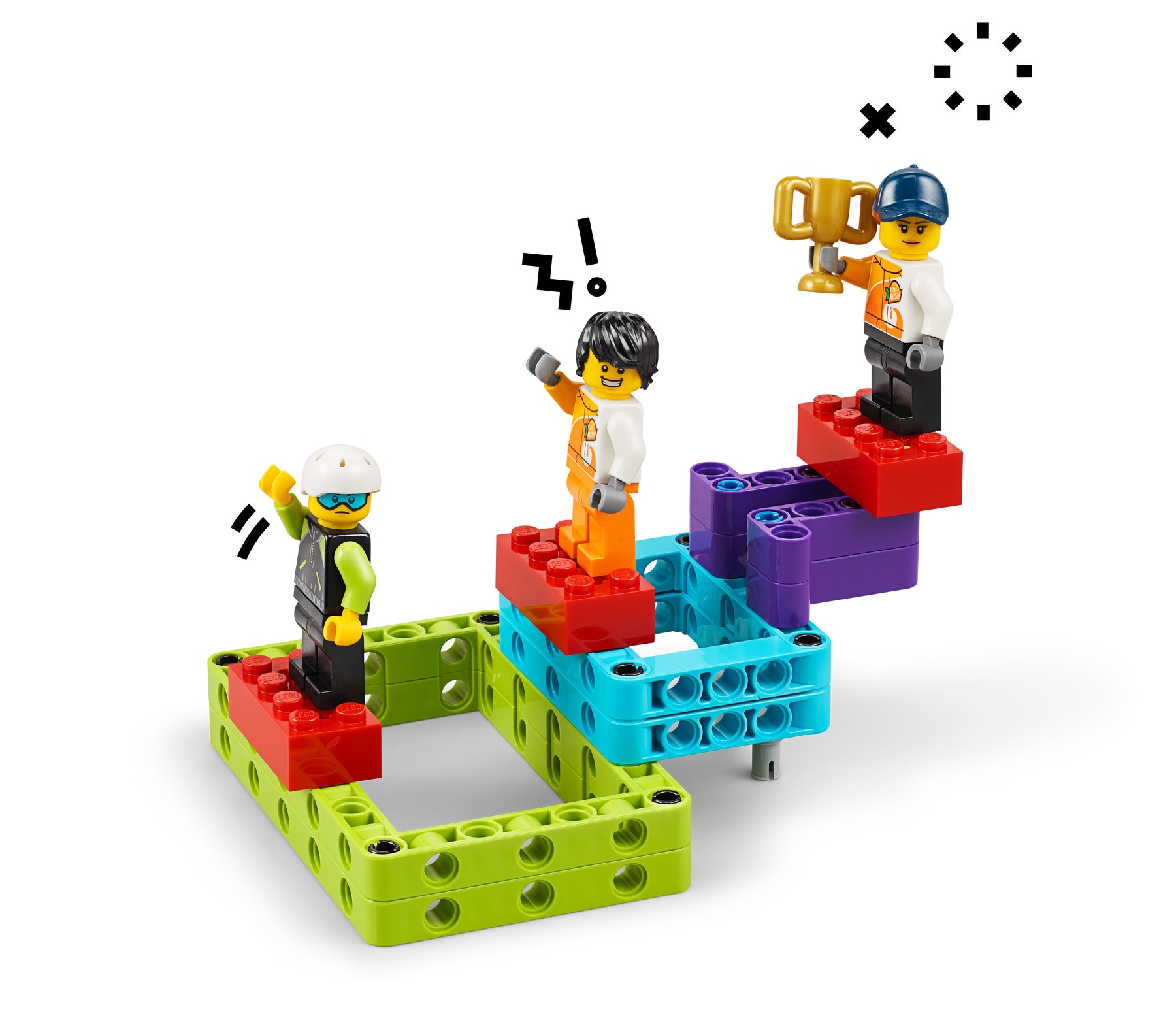
- Have the groups start testing as soon as they finish building. They should take turns as they make sail adjustments to ensure that everyone has a chance to try out the models.
- Choose ONE fan speed setting for all of the tests. Any speed will do.
- If your fan is too big or too powerful, try moving it farther back from the starting line. You could also use a piece of furniture to block some of the fan's airflow.
- If your fan is too small, move it closer to the models or try moving the fan by hand, following the models.
Differentiation
Simplify this lesson by:
- Having your students set the sail at 90 degrees for each of the tests
Increase the difficulty by:
- Encouraging the students to adjust the shape of the triangular sail
- Challenging your students to figure out how to make the land yacht move upwind

(Note: This will require additional time.) To incorporate math skills development, have the students let their land yachts go at a 60-degree angle from the starting line, and measure how far they travel by counting how many revolutions the rear wheels made before they stopped. They can use the angle and distance traveled to calculate the area of the triangle that was created.
Rear wheel diameter = 43.2 mm Circumference of the wheel = (π x D = C)
- CCSS.MATH.CONTENT.6.G.A.1
Teacher Support
Students will:
- Understand how wind force acting from a distance can change an object’s motion
- Explore the relationship between energy and forces
- LEGO ® Education BricQ Motion Prime Set (one for every two students)
- Masking tape
- Medium-sized tabletop electric fans (ideally, 1 for every 10 students)
- NGSS MS-PS2-2
- CCSS.ELA-LITERACY.SL.6.4
Lesson extension
Student Material
Student worksheet.
Download to view and share the student worksheet.
Share with:

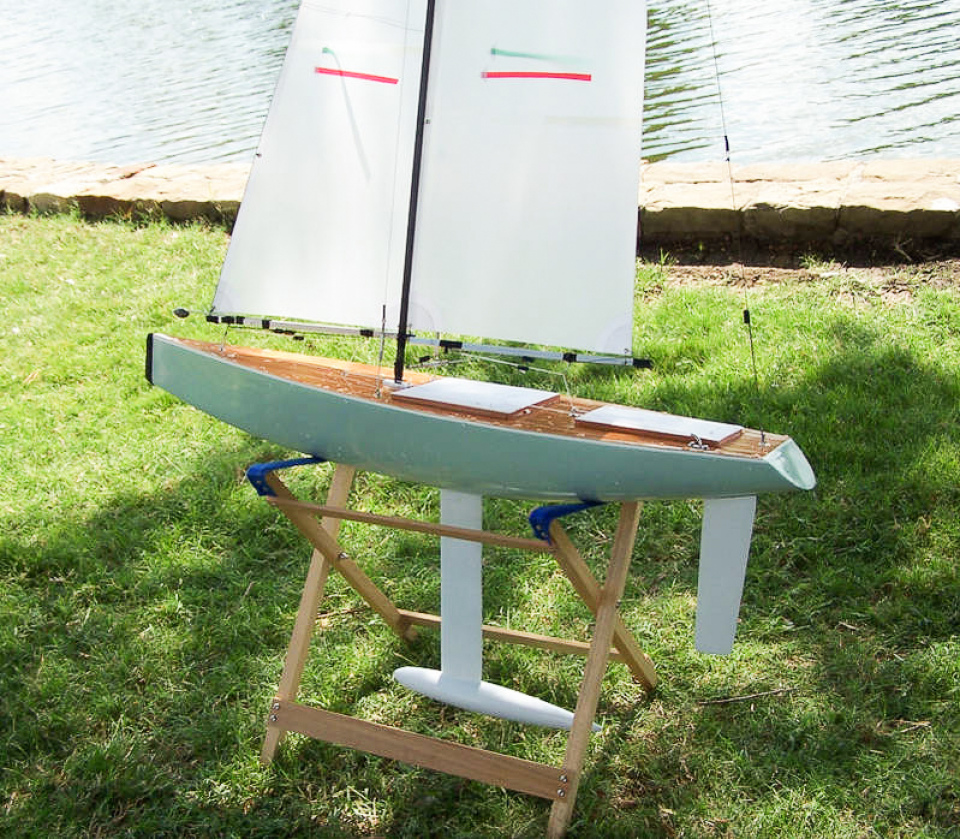
Build your own radio controlled yacht
Are you ready to embark on the exciting journey of building your very own model rc yacht.
Our comprehensive eBook has clear building instructions and step-by-step photography for the Racing Sparrow 750mm RC Yacht.
What we cover in our boat building eBook
Download a sample of our eBook
Even those with limited building experience can join in on the fun with minimal materials and a simple toolset. Our eBook by New Zealander Bryn Heveldt covers strip planking, fibreglass strengthening, mould and casting techniques, electrics installation, spray painting and masking, sail making and tuning.
To get started on your Racing Sparrow model RC yacht project, purchase our eBook and download the PDF now.
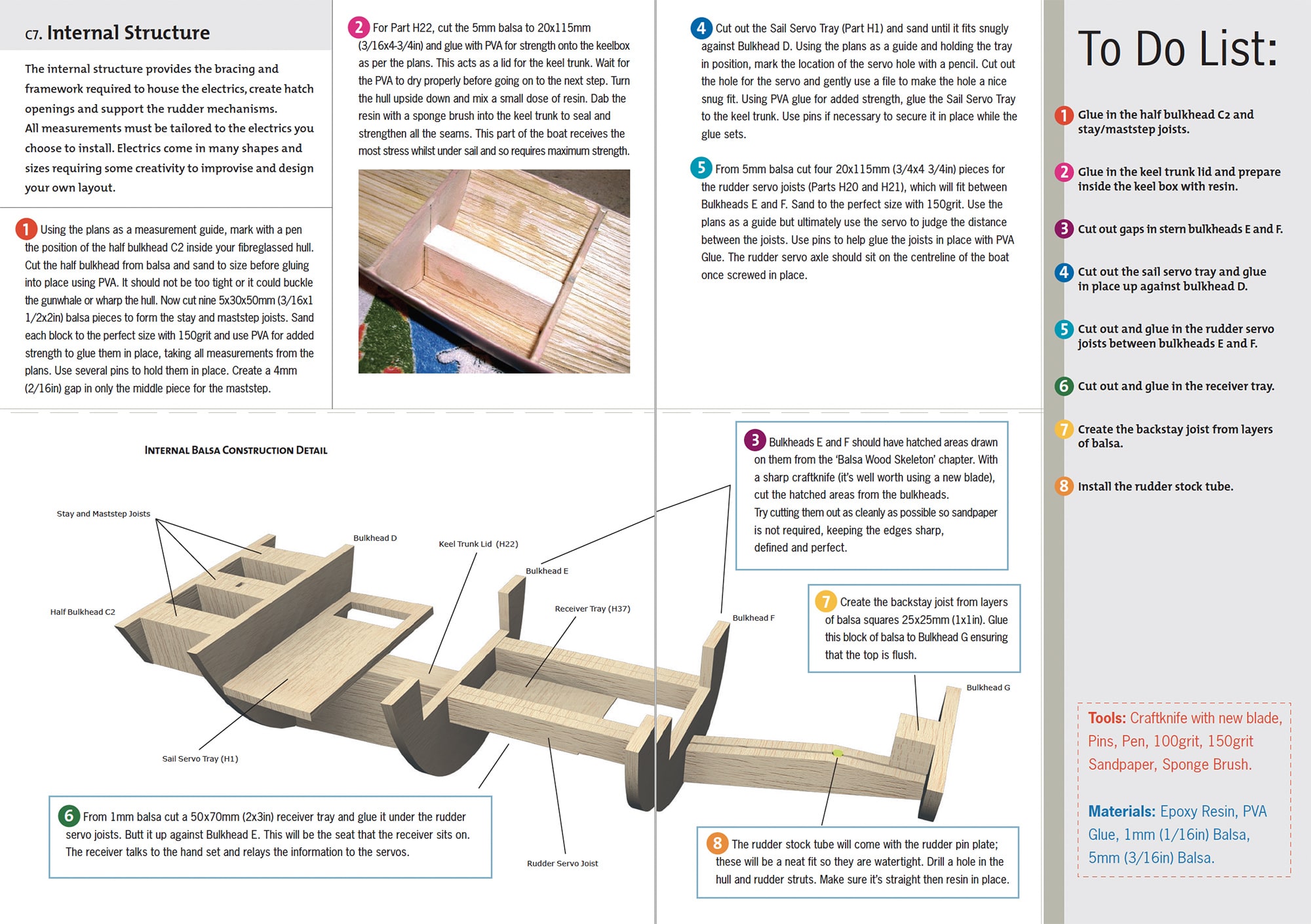
Racing Sparrow Blog
We share tips and stories from the model boat building community. See all Blog Posts.
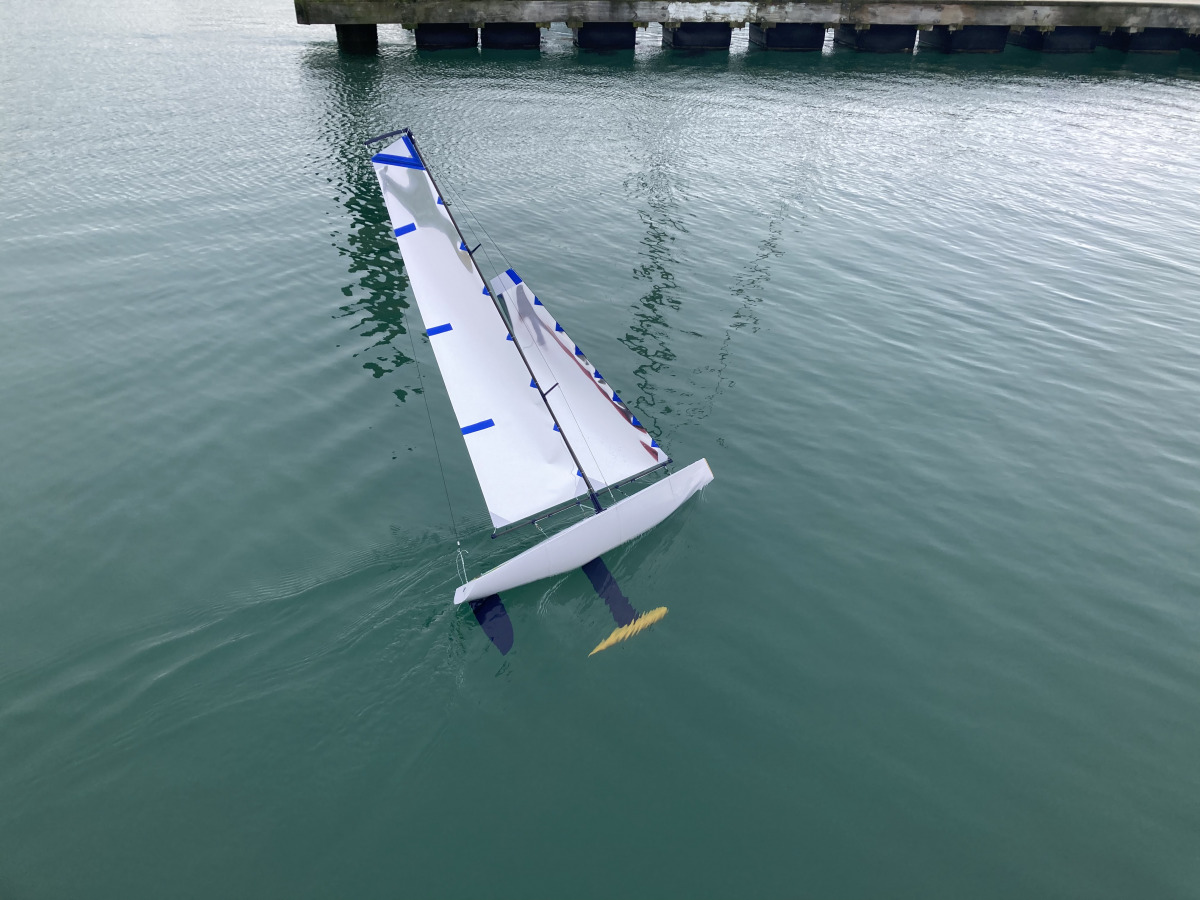
3D Printing Update: Print Your Own Radio-Controlled Yacht!
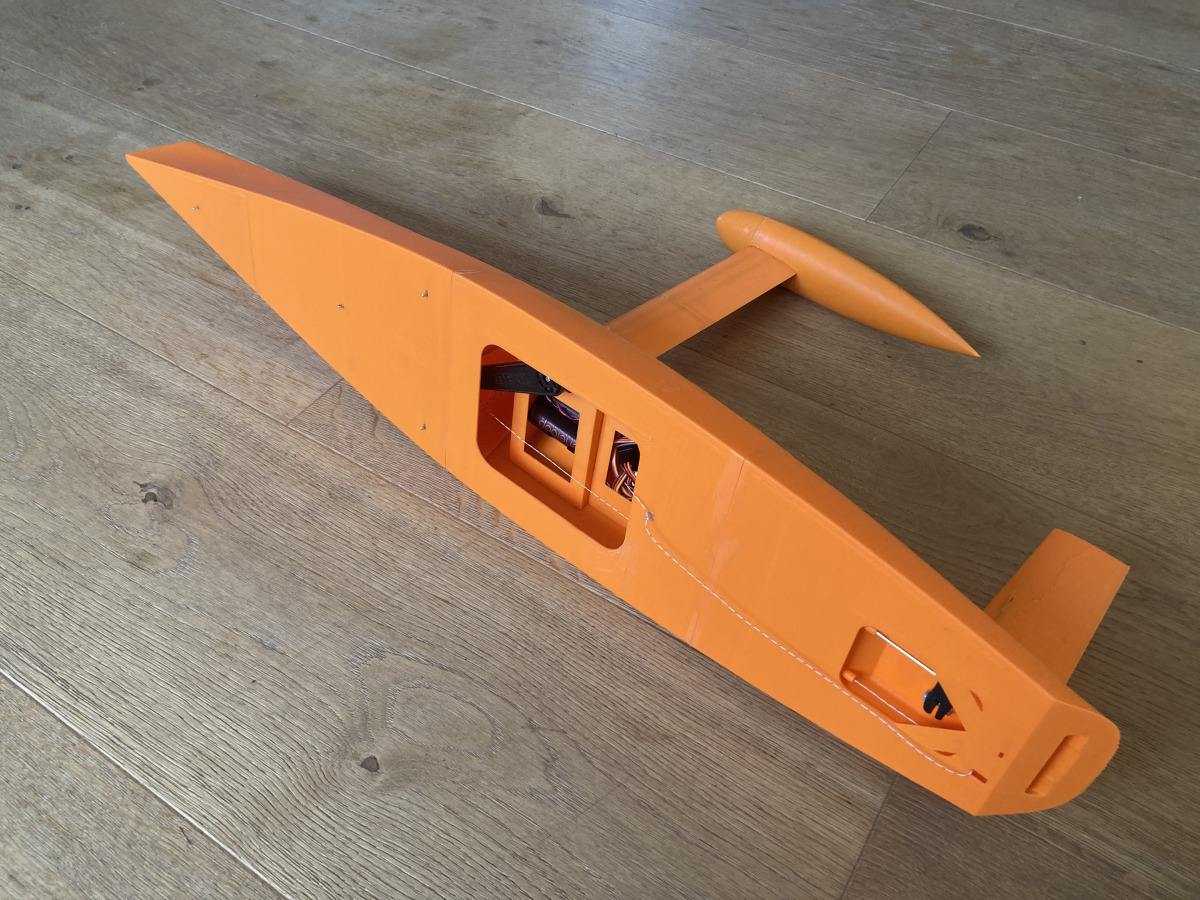
A 3D Printed Racing Sparrow!
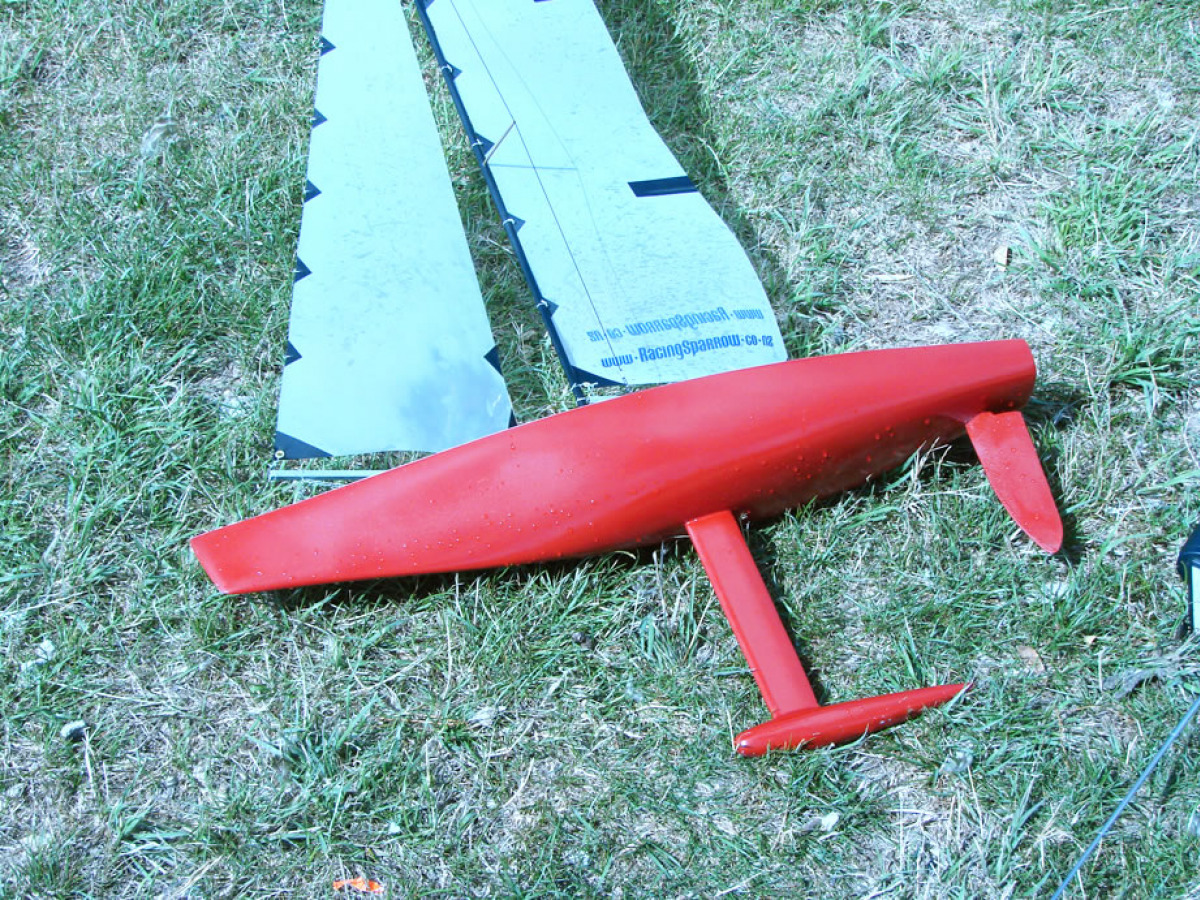
The Design Rationale for the RacingSparrow 750
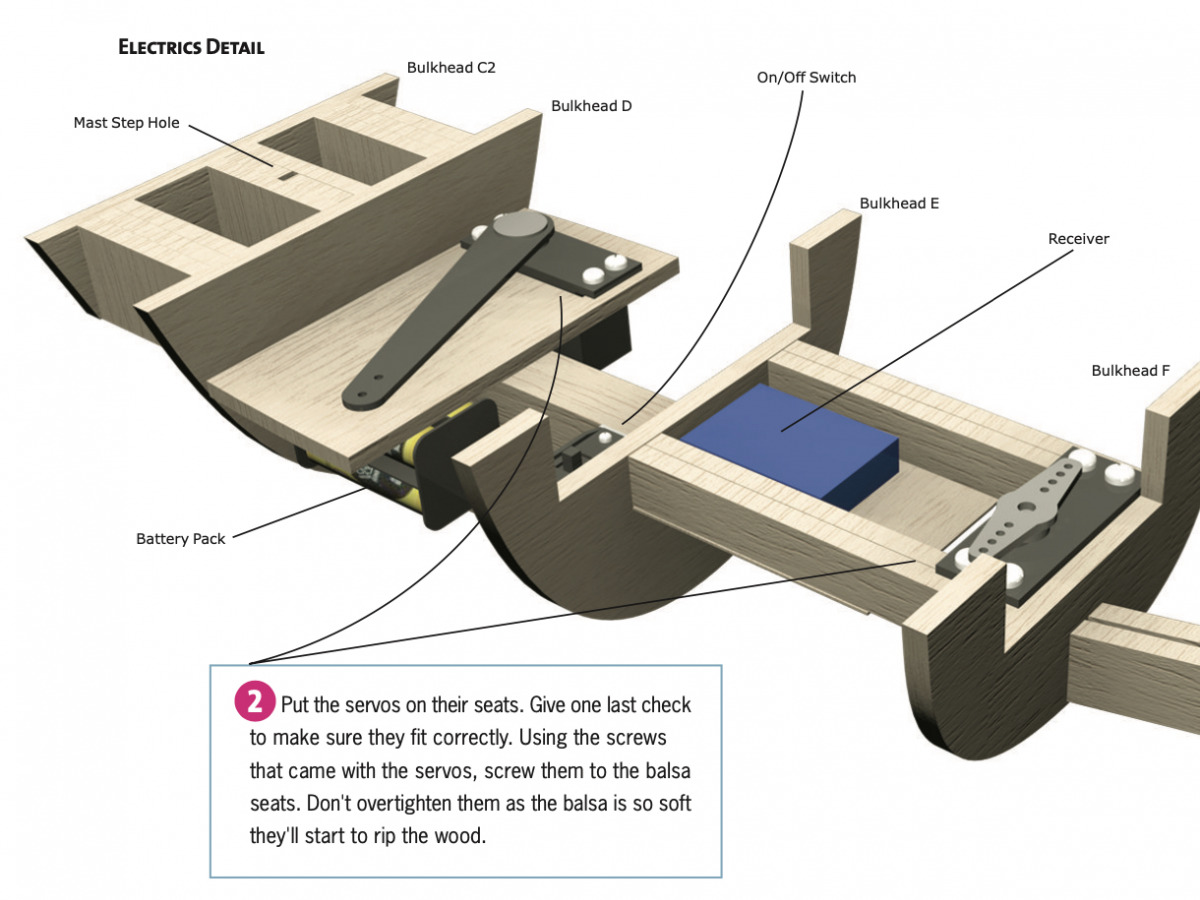
Radio Controlled Yacht Electrics - For Beginners
Free model boat plans.
We provide a number of different boat plans that you can build using techniques covered in our full eBook.
You can download plans for boats of different sizes and specifications.
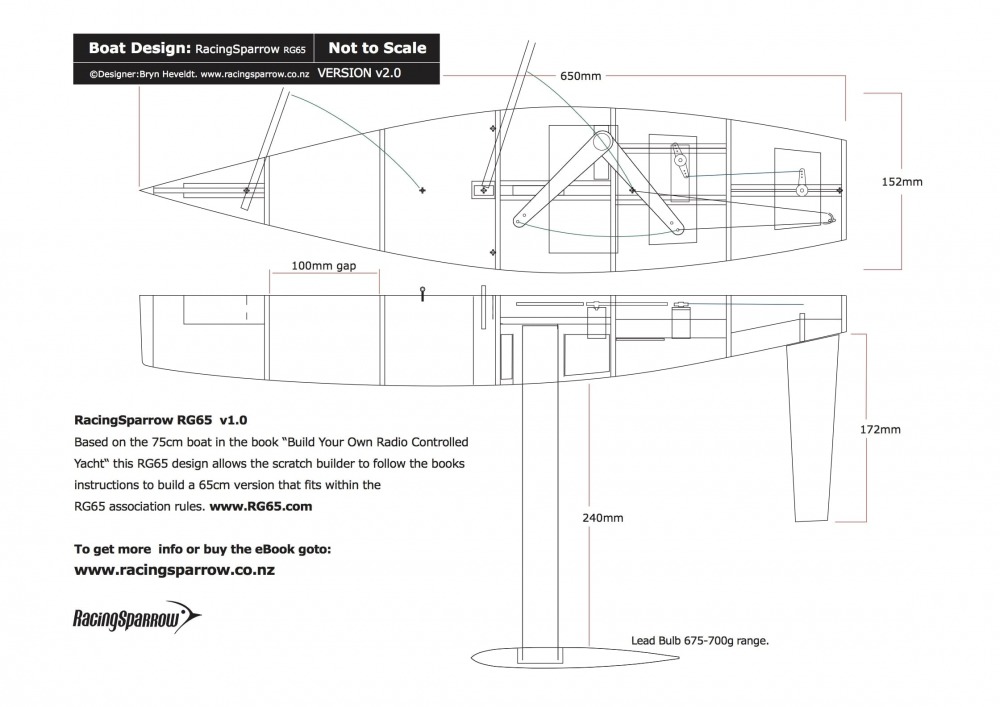
What our customers say about Racing Sparrow
Being a complete novice, I purchased your book a couple of years ago and built two racing sparrows. Building on this experience I then went on to build, from scratch, an IOM (Triple Crown design). I've since joined a local club and sail virtually every weekend. I would just like to thank you for your endeavours which have allowed me to enter a world I never thought was in my reach.
John Sterland, Australia
Coming upon your book, "Build your own Radio Controlled Yacht" in the Napier Public Library, I am hugely impressed. The combination of your superb photos and illustrations with your easy writing style make it a standout publication and I hope it does well for you.
Richard Spence, New Zealand
Thanks for an excellent design in your RG65. I trialled her again today in a solid 20 knots gusting higher. Even so in a steep chop and fingers off the rudder she drove upwind remarkably well, balanced perfectly. Very impressed that a model boat can handle that with a large rig. I found the book excellent. Ive built several big boats, plus a few skiffs and without that resource building such a good boat would have been impossible.
Mike Bennett
Boats built by the Racing Sparrow community
We continue to be amazed at the beautiful model RC boats created by Racing Sparrow enthusiasts . Send your images to info@racingsparrow.co.nz.
Take a look at the full boat gallery page. So many fine model yachts!
Weighing up the options - Garry Angel , France
May 2, 2009

DKM247 - Proud RacingSparrow Builder/Owner , Melbourne, Australia
Dec 1, 2016

Andrew Scott - RS1000 , Ayrshire, Scotland
Jun 9, 2010

Build a sparrow in less than 3 hours!
Oct 18, 2013

Take a look at the blog section for a full write up about this model.
More about Racing Sparrow
When I was nine years old my father, Ross Heveldt taught me to sail down at Bucklands Beach in Auckland. My wee optimist dinghy was called 'The Racing Sparrow', the nickname my uncle Bruce Curry gave to me when I was a small boy. Apparently I had an abundance of energy.
I studied at Whanganui School of Design and have been a designer / developer since 1998. I live in New Zealand.
Best wishes and happy sailing, Bryn Heveldt.
To contact me please email: info@racingsparrow.co.nz
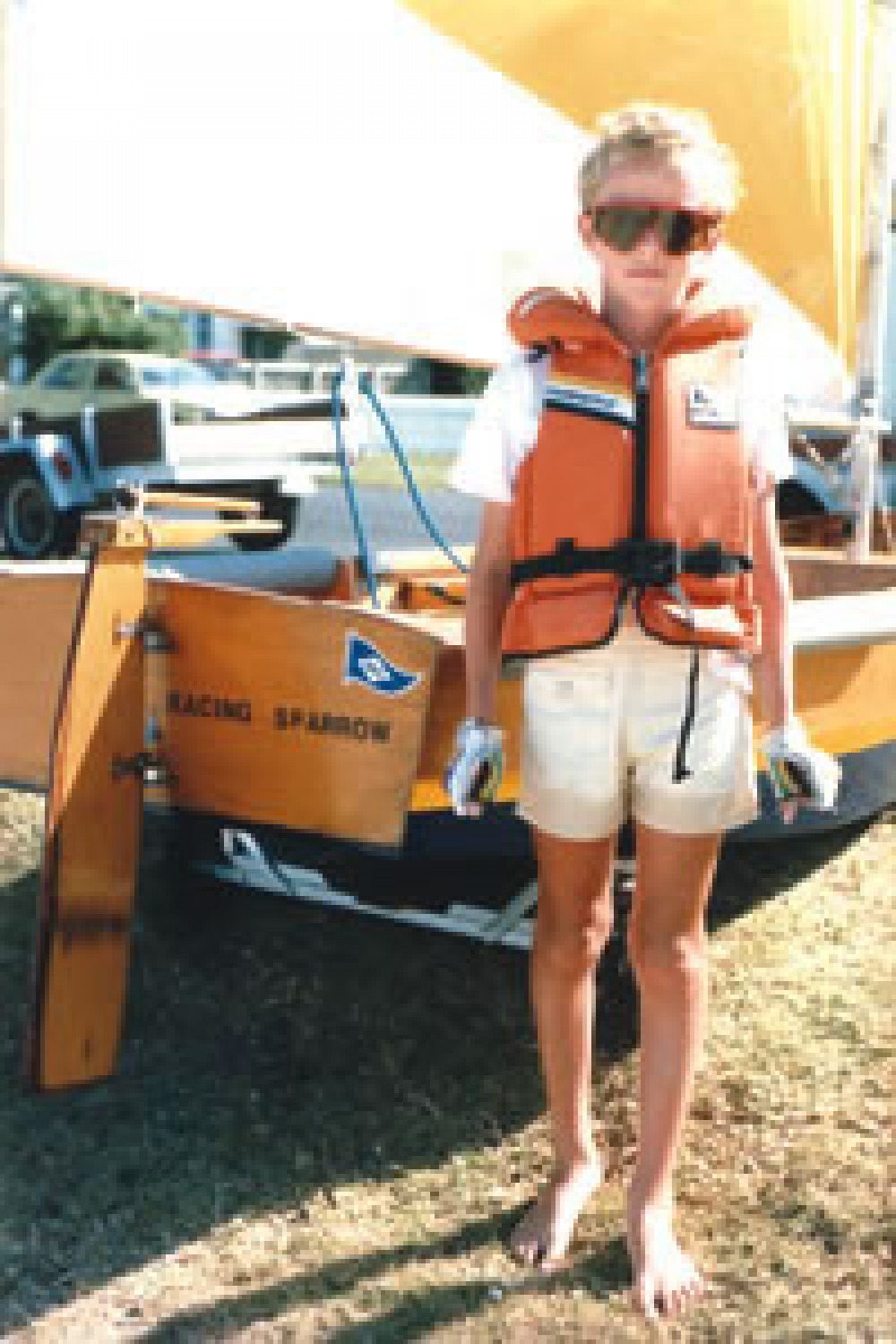
- Hispanoamérica
- Work at ArchDaily
- Terms of Use
- Privacy Policy
- Cookie Policy
10 Boathouses That Take Architecture Over the Edge of Dry Land

- Written by Jack McManus
- Published on June 14, 2018
Whether lining a river bustling with rowing crews or sitting calmly at the edge of a lake, boathouses have a storied history and an inexplicable romance to match their unusual program. Designed for use as a training facility for elite rowers, a vacationer’s waterfront playground , shoreline retreat , or even as a historical preservation project , boathouses captivate the imagination as they transcend the limits of the land-form relationship on their site.

Leaving land creates a number of challenges and opportunities for an architect, particularly in creating a stable base for a building on the edge of dry land. As seen in the following collection of contemporary boathouse projects, waterfront structures can tower over the water on piles, float on a buoyant platform, or perch comfortably on the coast and connect to the water with an extended boat ramp. The relationship between a waterfront building and its corresponding body of water encompasses every aspect of a project’s architecture—affecting climate, humidity, noise, light, and particularly the panoramic views out across the water from upper floors and elevated balconies.

To celebrate a summer of cooling off by the water, here’s a collection of 10 newly-constructed or renovated boathouses (and one bonus resort complex) that take amphibious architecture to a new level.
Het Bosch / JagerJanssen architecten + Dreissen Architecten
Amsterdam, The Netherlands

WMS Boathouse at Clark Park / Studio Gang
Chicago, IL, USA

Community Rowing Boathouse / Anmahian Winton Architects
Boston, MA, USA

Michael Baker Boathouse / Associated Architects
Worcester, United Kingdom

Klostergarden Boathouse / Trodahl Arkitekter
Mosterøy, Rennesøy, Norway

Boathouse / Cibinel Architecture
Lake of the Woods, Canada

Muskoka Boathouse / Christopher Simmonds Architect
Muskoka Lakes, Canada

Modern Boathouse / Weiss Architecture & Urbanism Limited
Parry Sound District, ON, Canada

Boat’s House at Millstätter Lake / MHM architects
Seeboden, Austria

Sports Technification Centre For Rowing And Canoeing Orio / U.T.E. Atristain Begiristain
Orio, Basque Country, Spain

Boat Rooms on the Fuchun River / The Design Institute of Landscape and Architecture China Academy of Art
Mei Cheng Da Dao, Jiande Shi, Hangzhou Shi, Zhejiang Sheng, China

- Sustainability
世界上最受欢迎的建筑网站现已推出你的母语版本!
想浏览archdaily中国吗, you've started following your first account, did you know.
You'll now receive updates based on what you follow! Personalize your stream and start following your favorite authors, offices and users.

IMAGES
VIDEO
COMMENTS
The first part of this build is preparing the sail for the land yacht. Our land yacht utilizes a sail that has a 5-foot boom and a height of 10.5 feet. This sail height was determined to work with the size of the land yacht. Our team used a much larger sail from a sailboat that will need to be cut to the right dimensions.
Hey guys, Here's a short video of some pictures and video clips of the land yacht I built for a school project. I based my design on the Blokart, I used 304...
Protei Land Yacht: The aim of this prototype was to develop a wind train from our last model, the Windtrain Umbrella that would have both improved performance and construction. ... and used these to cut out the wooden components for this build. I also had to cut the aluminium rods to the appropriate sizes, 4x600mm and 2x300mm pieces.
In today's GSC at Home, you will be designing and building a land yacht! But first, a question: what actually is a land yacht? A land yacht is a car with a s...
WHEELS. the yacht will be using 4.00x 8 rims commonly known as wheel barrow wheels. they are the most universally available wheels we've ever come across, usually reasonably priced and offer good rolling ability on a range of surfaces. the Bearing most commonly seen is the 2"OD,1"ID low speed bearing. which is the easiest to build with . with a bit of work the wheels can be retrofitted with ...
Home made land yacht. After gathering materials for some time and some inspiration from a local BloKart owner Dave, the Land Yacht project has come to a rea...
Build yourimagination. Build your. imagination. As a process, having your own yacht built comes close to having your own house built. You have an idea, you talk to an architect, you discuss the intended use, possibilities, materials and budgets. Except that when its done, you can take your boat all over the world.
Yacht plans and blueprints are essential tools for anyone looking to build their own yacht. These detailed documents provide a roadmap for the construction process, outlining the necessary steps and specifications required to bring a yacht to life. Without a plan, building a yacht can be a daunting and overwhelming task.
Sunfish Land Yacht: Here's a quick way to turn your Sunfish or any dinghy into a speedy landyacht. ... Eventually I remembered that I could build stuff without designing it first. So I filled my MP3 player with lectures from the London School of Economics, put on my Jackhammer Headphones, and just started welding stuff around the front of the boat.
The wheels may skid when it is close to the fan.The energy from the wind is collected by the sails, geared down (3:1), which increases the force and turns the wheels, but in the opposite direction. When it skids - the wind force one way is equal to the friction force of the tires pushing the other way. Idea Predict and test what happens if ...
Microsoft Word - Design and Make a Land Yacht.docx. Design and make a Land Yacht (suitable for 3rd - 6th classes) Strand Unit- Forces. Exploring how objects may be moved by air. Task: Design and make a wheeled vehicle that is powered by a sail. A hairdryer could be used to act as the wind when testing the land yacht.
I'll give you the 3D CAD drawings and dimensions of every part that needs to be made, along with lists of materials, cutting lists and detailed building instructions. Everything you need to build your own landyacht. Plans and instructions are clear and are very easy to follow. These plans are high quality C.A.D designs (Autodesk-INVENTOR).
The Superyacht Construction Team - Key Players. The process of building a yacht will involve a great number of decisions, so having the support of a knowledgeable and experienced team is imperative. The owner may wish to engage a respected yacht broker to build the team, knowing that they spend a significant amount of time liaising with key ...
Land sailing is an exhilarating world that blends the best of sailboats, iceboating, and fast automobiles. We've become a closed-up world — convertibles are almost extinct, office windows have been replaced by electronic lighting, and even our homes insulate us from the outdoors. But for some heretics, there's a particular ecstasy in the ...
A superyacht designer is responsible for creating an attractive and practical design for your future yacht. A naval architect is typically a professional engineer in charge of construction, design and repair of yachts. If optical appearance and interior design is your focus, yacht designer might be appropriate to hire.
This project started after I tried to get my boy sailing an optimist dinghy and kind of failed. Got a bit stuck on the idea to get him understand sailing as ...
Merle Wood & Associates have seen the construction (including those now in progress) of more than 60 yachts ranging from 100 feet to more than 500 feet in length. Because of this, we are globally recognized by our piers and clients as leaders in new yacht construction. 1-954-525-5111.
Step 1: Design (Skip If Using Provided 3d Print Files) The first step in designing this land yacht was assembling all the required RC gear. This really dictates the layout and physical size of your land yachts 'body'. For a functional land yacht you only need a very basic RC setup: 2chanel transmitter & receiver.
Tell students that they're going to build a land yacht, and investigate how wind force can change its motion. Explore (Small Groups, 30 Minutes) Ask the students to work in pairs to build the Land Yacht model. Tell them to take turns, one partner searching for the bricks while the other builds, switching roles after each step has been done.
Our eBook by New Zealander Bryn Heveldt covers strip planking, fibreglass strengthening, mould and casting techniques, electrics installation, spray painting and masking, sail making and tuning. To get started on your Racing Sparrow model RC yacht project, purchase our eBook and download the PDF now. Purchase PDF eBook $14.99. *USD.
Leaving land creates a number of challenges and opportunities for an architect, particularly in creating a stable base for a building on the edge of dry land. As seen in the following collection ...
Thanks to Bespoke Post for sponsoring this video! Head to http://www.bespokepost.com/woodworking20 and use code WOODWORKING20 to grab your "box of awesome" a...
About Press Copyright Contact us Creators Advertise Developers Terms Privacy Policy & Safety How YouTube works Test new features NFL Sunday Ticket Press Copyright ...